
OPINION
Yeah, I can tell you used AI to write your essay; LLMs are hurting Aggie academics A6

SPORTS
Visually impaired athletes find their place with BCS Outlaws’ beep baseball team B1



OPINION
Yeah, I can tell you used AI to write your essay; LLMs are hurting Aggie academics A6

SPORTS
Visually impaired athletes find their place with BCS Outlaws’ beep baseball team B1

By Nicholas Gutteridge Editor-in-Chief
The legal status of 15 Texas A&M international students has been changed in a government database as of Wednesday afternoon, putting their ability to stay in the U.S. into question. The number is increasing and stood at nine on Monday morning and 11 by Tuesday, with the university noticing the first change on March 28.
Of the 11 A&M students impacted as of Tuesday, eight are currently enrolled, and three have graduated and remained on a visa using one of several post-grad options available. Ten are graduate students, one is from the Galveston campus and the nine graduate students from College Station are split equally between the Colleges of Engineering, Arts & Sciences and Agriculture & Life Sciences.
In an email to faculty, staff and students sent Wednesday afternoon, Provost Alan Sams said A&M officials “do not have clarity on why these records are being terminated.”
Here’s what to know
The federal government seems to be targeting international students with any semblance of a criminal record, no matter how small.
In an email obtained by The Battalion, director of A&M’s International Student and Scholar Services, or ISSS, Samantha Clement said the government’s listed reason for the status changes was that the student was “identified in criminal records check and/or has had their VISA revoked.”
The Associated Press also reported that after three Aggies had their visas terminated, university officials who looked into the cases
found that each “had long-resolved offenses on their records, including one with a speeding ticket.” A university official said the students had not committed any dangerous offenses known to the university.
In a State Department press conference Tuesday morning, spokesperson Tammy Bruce declined to share the criteria being used to target students but said it was being “applied appropriately.”
“We don’t discuss individual visas because of the privacy issues involved,” Bruce said. “We don’t go into statistics or numbers. We don’t go into the rationale for what happens with individual visas. What we can tell you is that the department revokes visas every day in order to secure our borders and to keep our community safe, and we’ll continue to do so.”
Other international students at multiple U.S. universities who have had their visas revoked have been involved in campus activism, largely pro-Palestine advocacy. However, it remains unclear whether those affected at A&M had similar affiliations. Axios reported that more than 300 international students nationwide have had their visas revoked in recent weeks.
The federal government is not communicating or working with the university
Clement said the federal government was changing students’ legal status without notifying A&M or those impacted, forcing the institution to monitor students’ statuses throughout the day. When the university notices a discrepancy, officials get in contact with the student as quickly as possible to inform them of their options.


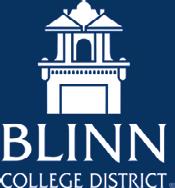




By J.M. Wise News Editor
A “bitter” legal battle between two growing regions in Texas has caught the Texas A&M System and the cities of Bryan and College Station between a rock and a hard place: the law and their growing need for water.
The Simsboro formation is the area of the Carrizo-Wilcox Aquifer that provides groundwater to cities in the Brazos Valley via pumps. Georgetown, a city north of Austin, has applied for a permit to pump water out of the Simsboro formation. Residents of Brazos Valley believe that pumping water out of the formation will threaten their water supply, and subsequently their way of life.
Since September 2024, the water in the aquifer has been caught in the middle of a lawsuit between A&M, Brazos Valley cities and the Groundwater Conservation district. A&M and the cities argue that the permits were granted improperly
due to a lack of proper procedure during the permit granting process, which according to groundwater law experts is the only route they could have taken to fight the water permits.
Professor of law Gabriel Eckstein, the director of the A&M law school’s program on energy, environmental and natural resource systems, said Texas’ groundwater laws can be confusing to navigate.
“The [Texas Supreme Court] in 1904 said, ‘Well, we don’t know a lot about groundwater, how it flows, it’s mysterious, the best thing for development is to give landowners free reign to maximize their natural resources,’” Eckstein said. “ … If that wasn’t bad enough, in 2012, in the Day case, the Texas Supreme Court again not only resolidified the rule of capture but also gave it a little more definition.”
The Texas law governing groundwater is called “rule of capture” and dates back to English common law. Rule of capture allows for landowners to capture oil, gas and water on their property and gives them total control over the resources. The water under a person’s land legally belongs to them until it flows out of the area.



























Despite the weather, students proudly received their rings
By Mollie Blake Life & Arts Writer
Despite rain clouds hanging low over Aggie Park and humidity thick in the air, joy was easy to nd on Friday’s Aggie Ring Day. Families huddled under umbrellas, friends stood in line with owers and proud students picked up small, maroon ring boxes that marked the completion of 90 hours of dedication and determination. This year’s Ring Day marked the 25th anniversary of the event.
For many students, the Aggie Ring is more than just jewelry: It’s a symbol of years of sacri ce and those who made the journey possible. Industrial distribution junior Jose Tapia re ected on how the Aggie Ring symbolizes more than just academic achievement.
“Once you get those 90 hours, you get to have that feeling,” Tapia said. “Like, OK, I already got this Aggie Ring, 90 hours. If I can do this, I can for sure graduate.”
Tapia emphasized the ring’s deeper meaning within the Aggie community.
“It means a lot to the entire Aggie Network because it shows how important it is to be an Aggie, both before and after graduation,” Tapia said. “It holds ultimate value … not just nationally, but globally.”
Computer science junior Anirudh Nukala said receiving his Aggie Ring was a de ning moment in his academic journey.
“It was always when, not if,” Nukala said. “I knew I was going to get it. I was always set on it. It just meant a lot to me.”
Nukala wasn’t celebrating alone. By his side was nance junior Jisoo Lee, a childhood friend he’s known since elementary school in Dallas. Though the two brie y attended di erent schools, their paths brought them back together at Texas A&M.
For Lee and Nukala, the moment they each received their rings proved how far they’d come, both individually and together.
“When you’re with someone that you’ve known for your whole life, it means a lot more,” Nukala said.
While some students had family y in from across Texas and beyond, others found support in their chosen families — the friends who showed up to make the day special.
“My family was actually not able to make it,” Lee said. “But I had a lot of close friends that were able to show up for me …. They’re like family. They were able to ll in those shoes on this sort of important day for me.”
For many, the ring represents a lifelong bond to their community, built through shared experiences whether it’s from family, friends or classmates.
“It’s something you share with your fellow Aggies after you graduate,” Nukala said. “Not every school has these traditions … but this is something that helps bring up community.” Lee agreed, adding that Aggie traditions make attending A&M a unique experience.
“It bonds everyone together,” Lee said. “You can do the same thing towards the same goal or the same outcome. … It’s something to bring the community together as soon as you get it.”
For biomedical science junior Isabella Pettit, receiving her Aggie Ring is a re ection of her journey.
“It’s almost like a dream come true in a sense,” Pettit said.“It shows the hard work and the community built at A&M. It’s the culmination of everything I’ve worked for, and it makes me appreciate the people around me who’ve supported me through it all.”
Even when the journey felt uncertain, many students said the ring was a reminder of how far they’ve come and where they’re going next. For Lee, it was a moment of long-awaited relief.
“Sometimes people don’t really get that a rmation,” Lee said. “But, something like this is simply to remember that we are on the right track.”
The day was about more than just the rings themselves. It was about celebrating milestones, friendships and the journey ahead.
“If this ring could say anything, it would say, ‘Hey, you already beat 90 hours,’” Tapia said. “‘Now it’s time to beat those other hours to graduation.’”



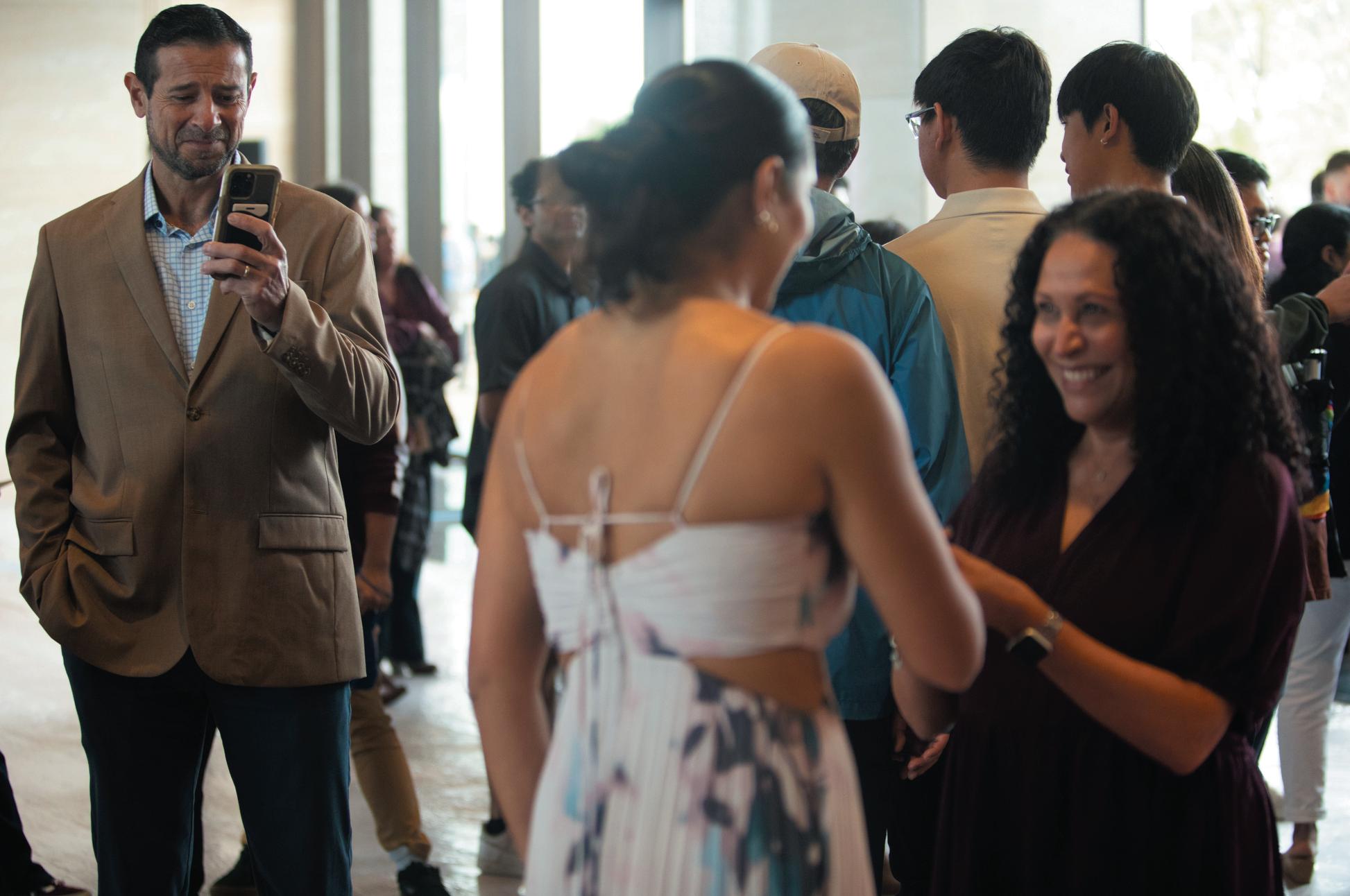
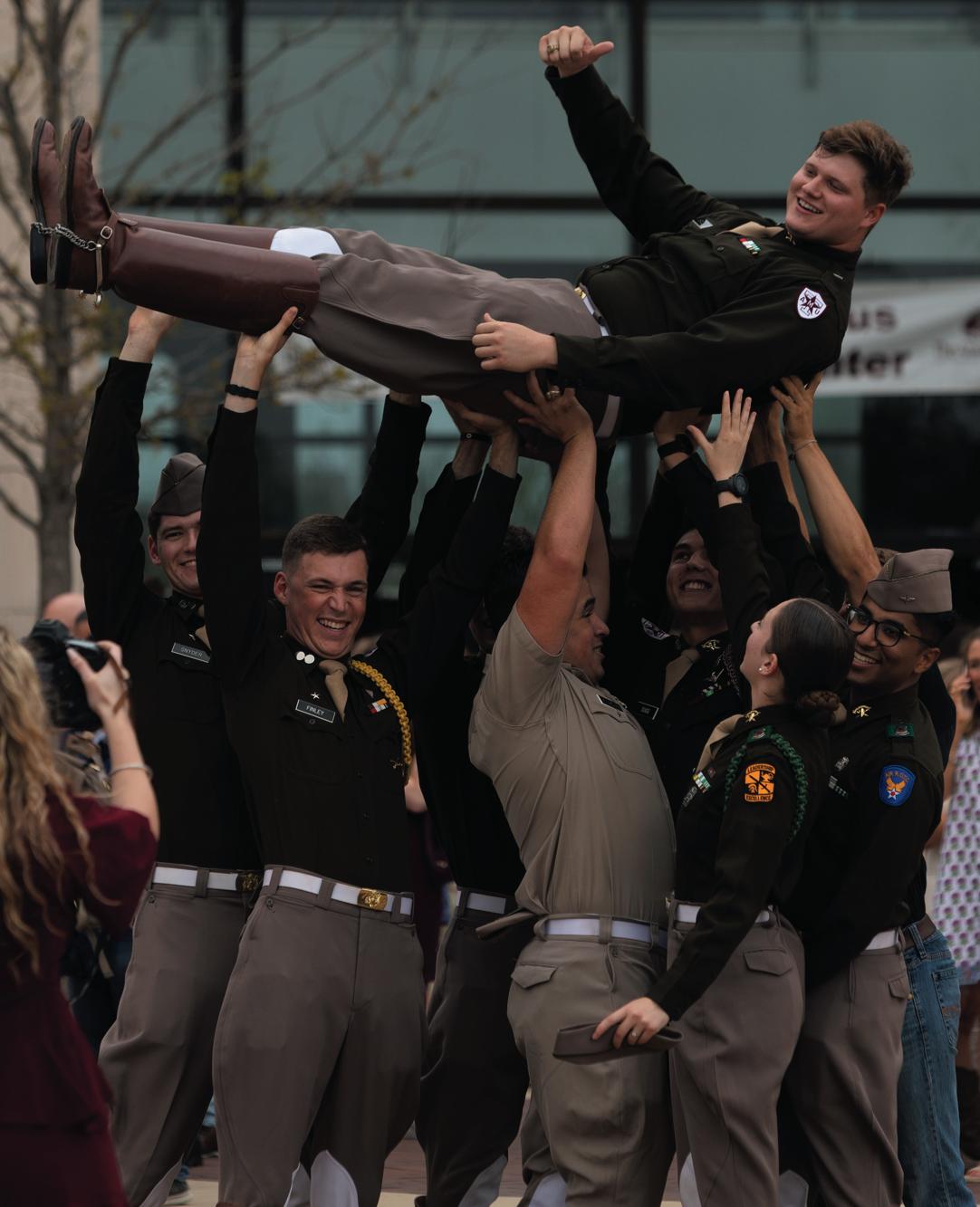

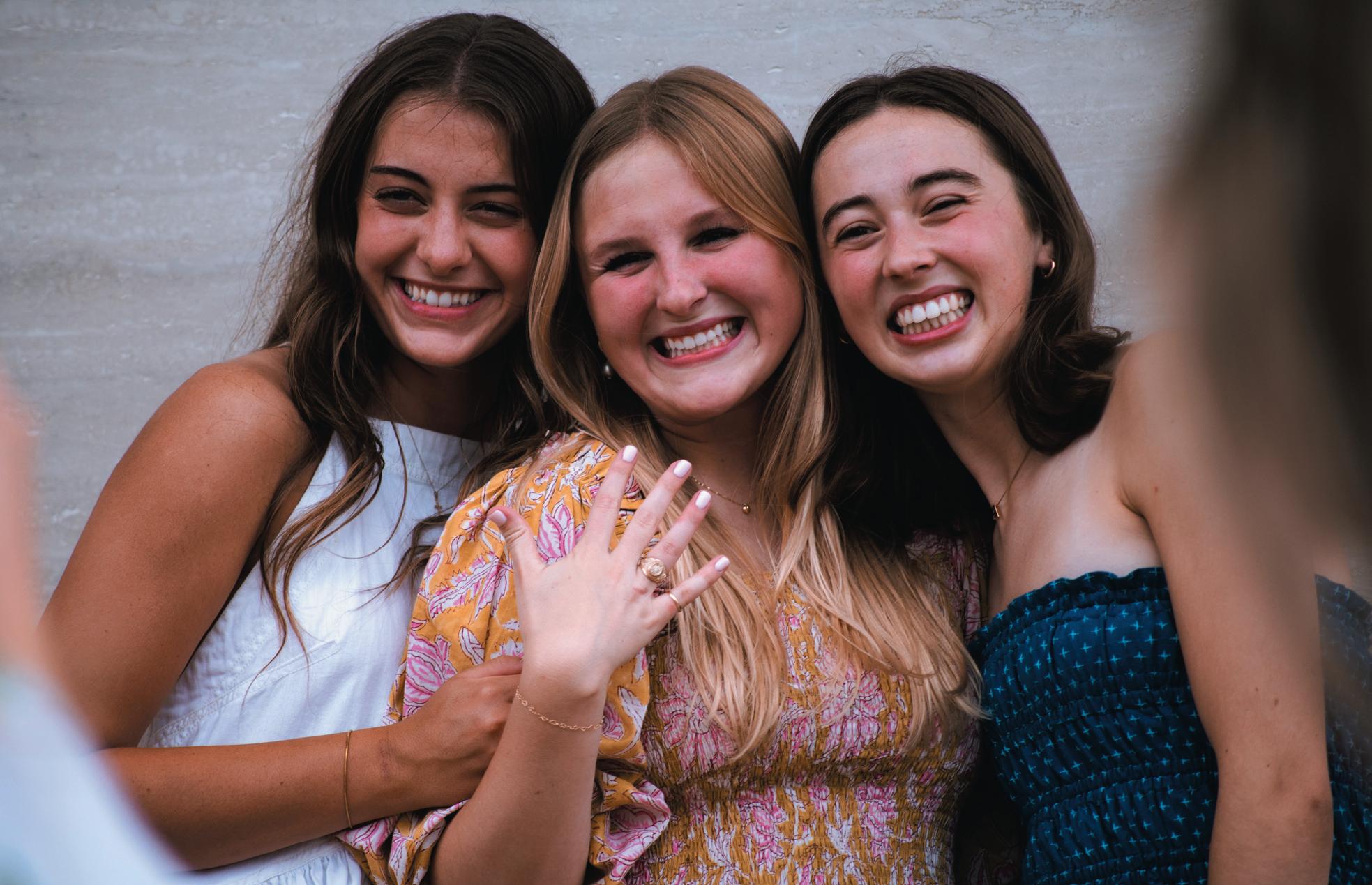
“This is an unprecedented situation being faced by nearly all U.S. institutions at the same time, so we are essentially figuring it out as we go along,” Clement wrote in the email.
If a student’s status is changed, they have options available
If a student is notified that their legal status was terminated, they are no longer allowed to work in the U.S. or re-enter if they leave the country.
Immigration and Customs Enforcement agents may also investigate to confirm that the student has departed, according to the Department of Homeland Security.
Students and their dependents must either leave the U.S. upon notification or reapply for legal status, which would allow them to stay enrolled at A&M until a decision is made. In the email obtained by The Battalion, Clement said that
one A&M international student had left the country as of Monday morning.
“Multiple students and attorneys are filing lawsuits,” Clement wrote. “Others are recommending students file reinstatement applications with [United States Citizenship and Immigration Services]. ISSS will support students with their preferred option.”
A&M has noted an increase in scam attempts toward international students
Clement noted that her department is seeing an increase in “scam attempts” targeting international students alongside an increase in “anonymous individuals submitting reports to ISSS about the allegedly unlawful activities of others who happen to be international students or scholars.”
ISSS has also been notified that several international students have received an email from the U.S. Consulate that issued their visa “indicating that it has been

“Many of us predicted these kinds of problems,” Eckstein said. “It’s going to be a mess, and this is exactly what you’re having.” Texas A&M, Bryan — I hate to say it, but I don’t think they have a leg to stand on.”
Bryan and College Station have created an advocacy coalition for legal changes to the water code as well. Their newly-launched website, KeepWaterLocal, features video testimonials from former students and College Station residents.
“Like other Southwestern communities, Brazos and Robertson counties face ongoing challenges:
drought, seasonal high temperatures, aging infrastructure and shrinking groundwater reserves,” the website reads. “Now, out-of-state entities and neighboring municipalities in the Brazos River Valley are collaborating to siphon away our city’s most precious resource — our water.”
Georgetown’s pipeline runs through two companies, Upwell Water and EpCor. Upwell has opened several pipelines throughout the state and runs millions of acrefeet of water daily. If completed, the Georgetown pipeline will run 89 million gallons per day into the fastest-growing area of the state: the I-35 corridor.
“They’re asking for prior

revoked, and they may be subject to deportation proceedings.”
However, as of Tuesday afternoon, those students’ legal statuses haven’t been changed. ISSS is reaching out to support those students as well.
ISSS is monitoring changes that may impact students sponsored through the Fulbright Program
Beyond the legal status reversals, ISSS is also monitoring policy changes affecting international students sponsored through the Fulbright Program, a government exchange program for graduates seeking a master’s or doctoral degree in the U.S.
Because the Institute for International Education, or IIE, which helps manage Fulbright students, is no longer processing post-graduation academic training, it has raised concern among those close to graduating and already working about their next steps, as IIE won’t process work authorization extensions.
appropriation rights, which is the system we have in place for surface water rights, except that surface water is owned by the state,” Eckstein said. “The problem with that is, if you get your groundwater permit before me, do I own the groundwater any less than you? It’s my groundwater beneath my land.”
The defendant in the lawsuit is the Brazos County Groundwater Conservation district, which is under the charge of its general manager Alan Day. A groundwater conservation district monitors and sets rules for groundwater allocation, although their legal enforcement authority is weak.
“We are mandated to not exceed the limit of the artesian well collection of 50 years,” Day said. “We will not allow an aquifer to be drained, and we will protect property rights.”
According to Day, Upwell took out a transport permit in August 2023 that expires this year. The main reasoning behind the lawsuit, Day said, was the fear of increased water prices due to lower aquifer levels. Despite this, Day said the conservation district couldn’t stop landowners from selling their water.
“They have that right,” Day said. “We will reserve, conserve and protect aquifers.”
In a statement, City of Bryan mayor Bobby Gutierrez released a statement saying out-of-state entities “are targeting our local aquifers, looking to profit without concern for our future.”

Here’s what the university is doing in response
Last week, ISSS launched a new webpage for immigration policy updates, and the department is developing an internal process for adding and maintaining its content. ISSS is also emailing important information to those who may be impacted, including updates about maintaining legal status and scam
“I use the term ‘water piracy’ when talking about this issue,” Gutierrez said in the statement.
“It is a race to the bottom of the aquifer. We’ve built a long-term water conservation plan to secure our community’s future. … This is modern-day robber baron behavior. They are trying to take what they want, with no regard for sustainability or long-term consequences.”
David Lynch, a managing partner at Core Captial and a partner in Upwell’s project, said that the cities have taken advantage of the judicial process in an attempt to stop the pipeline.
“This is an exploitation of a procedural glitch at the water district,” Lynch said. “We’ve been praised by the water district for being innovative and thoughtful and staying in the lane with these rules, and months and months after we had our project fully permitted … all of a sudden, as if they woke up and said ‘We need to try and control this process.’”
According to Lynch, Upwell had tried to address the concerns of the Brazos Valley by reducing the amount of water they planned on pumping by 20%.
The new amount would equal approximately 0.035% of the total storage amount in the Simsboro Aquifer per year.
“The city of Georgetown is going to get this water from somewhere,” Lynch said. “They have a massive demand and an economic engine
attempt warnings. Clement noted that ISSS is also coordinating with other campus units to schedule and promote Q&A and support sessions for international students and scholars. They’re also coordinating with the Office of General Counsel and the University Police Department to “develop a policy for agency inquiries, such as what to do if ICE visits campus.”
that the state is very proud of. … We will be paying into the district more than $250 million dollars worth of fees that the district will then administer to help eliminate any potential cause of issue that our pumping generates.”
Towns that are growing along the I-35 corridor include Josephine, Georgetown and Weston. Over the past five years, the communities along the corridor have accounted for a majority of the population growth in the state, and as their population grows, so does their need for water.
Professor emeritus in the department of rangeland, fisheries and wildlife management Ron Kaiser said the need for water now cannot outweigh the need for water in 50 years.
“Ultimately, I think there’s a concern and a fear that if it’s drawn down too much, that could harm the aquifer,” Kaiser said. “Will it harm the aquifer and its storage capacity? Will it encourage something called saltwater intrusion? The risks are sort of unknown and unmeasured at this time.”
As A&M continues to grow, the need for infrastructure to support the increasing population is growing too. According to Kaiser, the greatest concern lies with economics and the environment.
“The reality is there is very little surface available,” Kaiser said. “Cities are having to rely on groundwater as water for their new growth.”
David Anderson dives into the motivations and influence of his award-winning career
By Julia Kazda Associate News Editor
After years of hard work, innovation and commitment, David Anderson ‘94, Ph.D., won the Southern Agricultural Economics Association, or SAEA, Lifetime Achievement award on Feb. 3 at the annual conference in Irving, Texas. The regional accolade has historically been awarded to collegiate educators who have demonstrated consistent influence and determination throughout their careers, and Anderson is no exception.
Anderson has been a professor of an agriculture and food policy graduate course at Texas A&M since 1996. Before this, he received his doctorate in agriculture economics from Aggieland to demonstrate his expertise as a livestock economist.
“I like the teaching,” Anderson said.
“It’s fun. I think the students are a lot of fun, particularly in, you know, in a graduate course, people are a little more sometimes engaged.
… I find it to be pretty rewarding.”
He said receiving the award was
an extreme honor. However, he’s not yet finished with his career and is eager to share his motivation and passion for the betterment of education with future generations.
With prolonged years of experience tends to come a lack of excitement, but Anderson said he defies these odds by allowing the knowledge and interests of his students to shape his ever-evolving curriculum. Rather than reusing old material, he seeks out hot topics.
“There’s times that a student will ask a question, and it actually changes what we’re going to do in class that semester,” Anderson said.
“Because I think the question is so good that we want to devote some time to it. So, I’ll take a day later in the semester. I’ll say, ‘Hey, give me a week or so to put together some reading materials for the class and to kind of develop a lecture on it.’
And then we use that in class.”
This method of engagement continues to impact Anderson’s students, especially those in the field of education, such as Charles Martinez ‘19.
During his doctorate studies, Anderson mentored Martinez and taught him life lessons he continues to utilize even today.
“What Dr. Anderson does best is combine the real world and what happens in markets to the theoretical book world, for lack of
a better term,” Martinez said. “And he does a good job of explaining and making complicated things seem very simple. … He can make a very complicated subject seem very, very simple, and you often leave him going, ‘Well, it’s not as hard as it seems.’”
Although Martinez has surpassed his years of schooling, Anderson makes it clear to his students that he will always be there to help. Martinez said Anderson is never more than a phone call away, whether it be for scholarly advice or a simple conversation, something that he tries to implement into his own career.
“Just because you graduate from Texas A&M doesn’t mean that he quits giving you advice and mentorship if you ask for it,” Martinez said. “And that’s one of the best things that, or the best qualities that he has. … It’s something that not a lot of people put time and effort into. And that’s being just a really good person and mentor.”
He recalled a time in which his wife was nine months pregnant during his Ph.D. qualifier test.
“If [the phone] rang three times for my wife, that was her going into labor, and I had to leave during the test,” Martinez said. “And afterwards, [Anderson] was like, ‘I guess she didn’t go into labor. Go
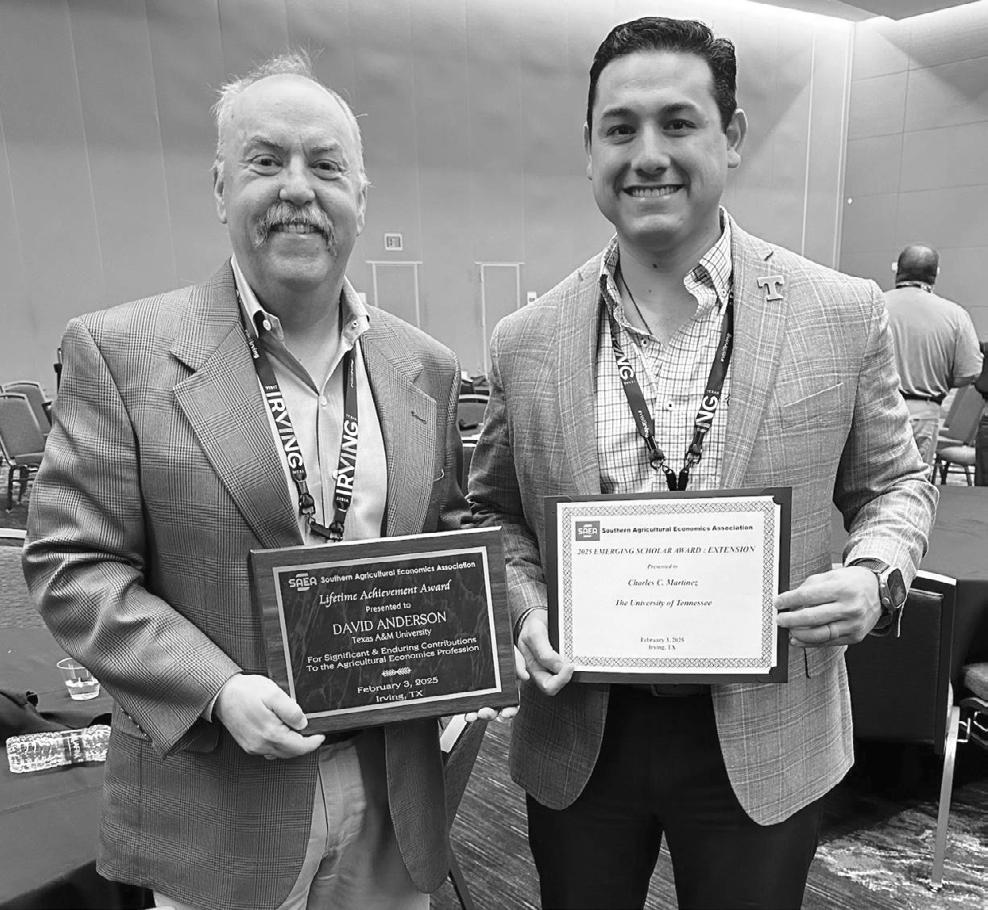
ahead and get to the hospital now.’”
The professor’s qualities rubbed off, as Martinez received the Emerging Scholar Award at the same association ceremony. Because of Anderson’s extensive presence and generosity, he has maintained a personal relationship with not only Martinez but his entire family, making the award ceremony a poetic moment for all in attendance. Martinez described it as a family reunion of academic
sorts.
“This is kind of a regional association of us ag economists, their Lifetime Achievement Award,” Anderson said. “And I was pretty proud to get that. But I thought, well, you know, sometimes lifetime achievement, that might imply that things are over, and I don’t think things are over. I like coming to work. I like what I do. I’m pretty lucky. And so my hope is to get to keep doing it.”

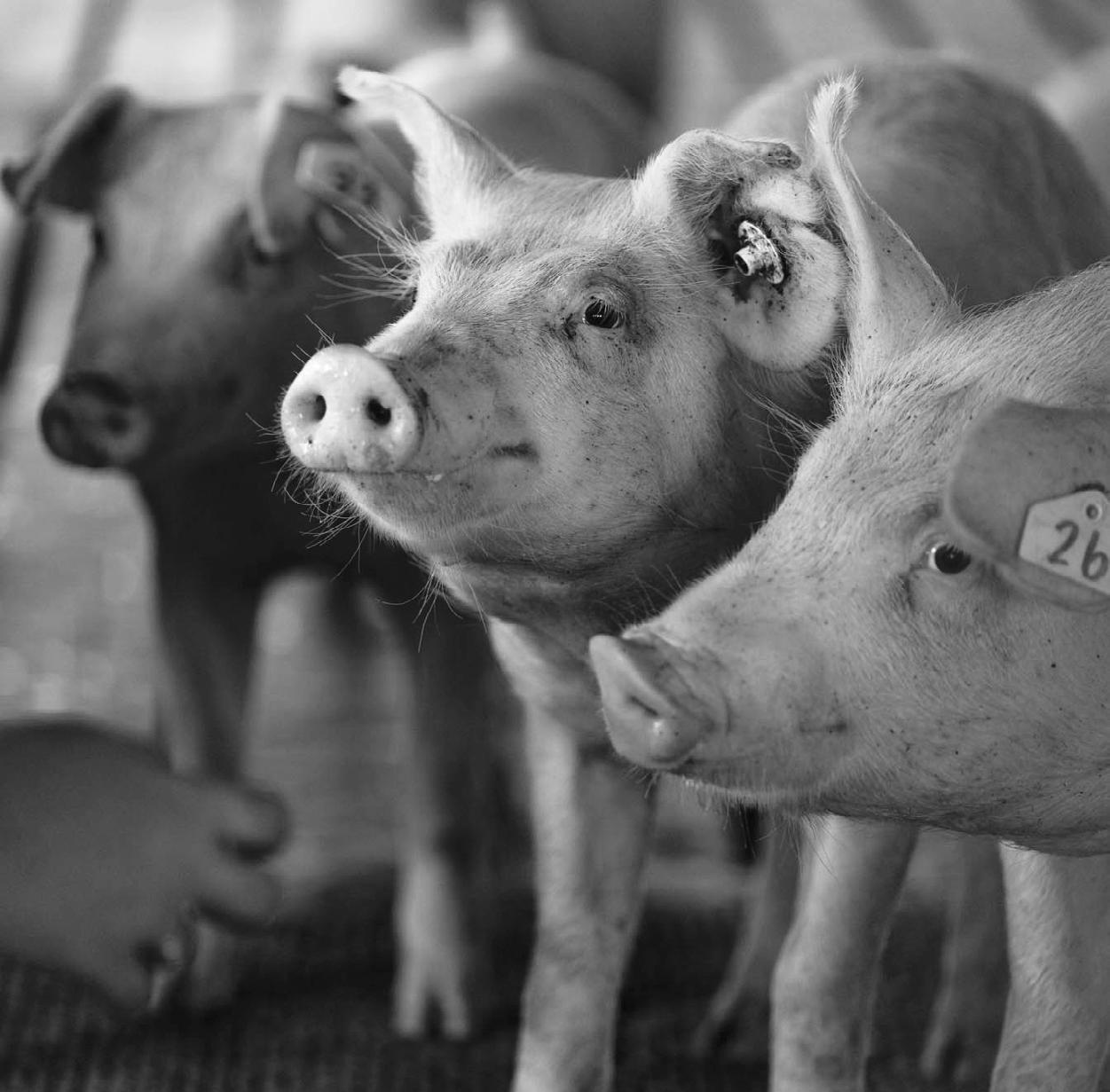
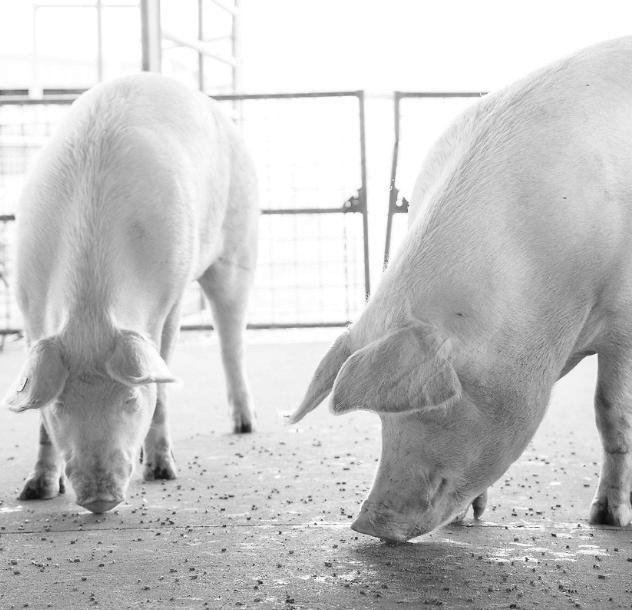
A&M experts speak on animal organ transplant trial, genetic engineering, xenotransplantation amid “priceless” opportunity
By Erin Wunderlich News Reporter
In March, two biotechnology companies were given the green light by the Food and Drug Administration, or FDA, to conduct trials transplanting genetically-modi ed pig kidneys into human patients with chronic kidney disease. In the scienti c community, the trials are highly anticipated, as success could mean supplying kidneys to thousands of patients on the national organ list.
Two companies, United Therapeutics and eGenesis, have been cleared to begin xenotransplantation — the act of transferring organs from one species into another, using their own genetically-engineered pigs. According to the Health Resources and Services Administration, over 103,223 men, women and children are on the national transplant list. Seventeen of those people die each day waiting for a match for a transplant.
“In my 30 years as a general surgeon, as a resident, I’ve watched people die,” Texas A&M clinical professor and director of MD Plus Programs Dr. Rob Carpenter said. “When you train as a physician, they tell you to be objective, but we care immensely and build relationships with our patients. I remember getting calls when a kidney match is nally available, only for it to arrive unusable. I’ve seen it happen over and over until the patient ultimately passes away. I can tell you, this opportunity to change people’s lives is beautiful, it’s priceless.”
According to the press release, United Therapeutics is expected to begin the trial in mid-2025 with six patients who have kidney failure. For the company’s unique UKidney to be transplanted successfully, eligible patients need to be between the ages of 55 and 70, diagnosed with kidney failure and on dialysis for at least six months prior to the trial.
The UKidney will originate from United Therapeutics’s new $98 million genetic engineering facility in Houston, which is being constructed to house the modi ed pigs and their kidneys for the trial.
“The reason why we are moving towards geneticallyengineered pigs is to literally knock out genes that identify the organ as not human,” A&M associate professor of precision gene editing Karl Clark, Ph.D., said. “United Therapeutics has also knocked out a gene to prevent the organ from growing too big for the human body and inserted several human genes that help avoid an immune response.”
When a human receives a donated organ — human or pig — their immune system won’t recognize the tissue and will send white blood cells to destroy it. Patients take immunosuppressants for the rest of their lives after receiving a transplant to prevent an immune attack, which can increase risks of other infections and certain cancers. Geneticallyengineered pigs could change that.
“Every moment that an organ for a renal transplant becomes available — which only occurs when someone dies and happens to be a match, in good health and an organ donor — the transport process reduces its longevity after being arti cially sustained for hours,” Carpenter said. “Here, we have the ability to, in a planned manner and under controlled circumstances, take the most optimal means of a match and
bring it directly from source to the recipient and save their life.”
Genetically-engineered pigs
Pig tissues are anatomically and genetically similar to humans’.The size of their organs matches our own, and their genetic makeup allows scientists to easily reshape cells that would be rejected by a human body.
“Xenotransplantation is generally not new,”A&M professor and swine extension specialist Je ery Wiegert, Ph.D., said. “Porcine tissue has been the main source to replace human corneas, heart valves, insulin producing cells and to cover burn wounds. In 2022, the rst successful pig heart transplant was done at the University of Maryland.”
Prior practices are models for success, Wiegert said. Geneticallyengineered pig kidneys have an increased chance to be accepted by the human body because they lack cells that identify them as foreign.
One speci c case has scientists hopeful that the FDA-approved trials will be successful. On Nov. 25, 2024, Towana Looney, 53, from Alabama received the third gene-edited pig kidney at NYU Langone. She was discharged from the hospital 11 days after surgery and is now the longest-living person with a pig kidney.
Carpenter de nes success as the gift of life.
“The ability to decrease the number of people who die every single day waiting for a solid tissue organ is incredible,” Carpenter said. “And that’s been a long time coming.”
Ethical considerations
Members of the public and some ethicists are concerned about the ethical implications of genetically altering genomes and using pigs’ organs for human bene t. There are hesitations of using this kind

of technology because humans are directly altering cells or “playing god.”
Some also wonder if this technology will be used in the future on humans and whether these trials will be the catalyst for that development.
“As both a scientist and a farmer who raises animals, I can understand people’s concerns,” Carpenter said. “In my opinion, if we look at the pork industry, we take the lives of animals for the nutritional bene t of human beings. Genetically modifying pigs to give organs is a much more meaningful and positive utilization of that life. It provides us with the ability to meet an overwhelming need and reduce the su ering of thousands of people. But I also respect the right to a choice, like if someone chooses to not believe in genetic engineering for religious or personal beliefs.”
Another concern is the transmission of zoonotic diseases, or those that can be transferred from animals to humans, due to xenotransplantation. A&M bioethicist Bryn Esplin, JD, said it’s de nitely a concern, but there will be safeguards in place.
“First, researchers must ensure that gene-edited pigs are bred and housed in designated, pathogenfree environments so as not to contract a microorganism that could be transferred to the patient,” Esplin said. “Ongoing biosurveillance of the patient and their close contacts is required.”
Many companies are already dabbling in gene editing for maintaining the livestock industry.
Pig Improvment Company is currently developing pigs that are genetically resistant to porcine reproductive and respiratory syndrome, or PRRS, which caused a $1.2 million loss in the pork industry last year.
If the trials are successful and pig kidneys become widely available, Carpenter said he is most concerned about the lack
of xenotransplantation for those a ected by ethnic disparity.
“The people who are at the greatest risk of dying are oftentimes individuals who are from underserviced, underresourced communities. The number of people that have renal failure who are African American or Hispanic is disproportionate to those who are caucasian,” Carpenter said. “And yet, the number of people within those communities who are close genetic matches and are willing to give a kidney is lower because of many, many other issues in the healthcare system.”
According to the American Kidney Fund, the number of people who have kidney failure who are African American or Hispanic is disproportionate to those who are white. Recent research even suggests that genetic factors could be the cause of increased kidney failure among African Americans.
“Oftentimes, underrepresented individuals who live in remote areas, like rural Texas, don’t necessarily have a transplantation expert that’s close by,” Carpenter said. “They are often the last people to receive help. The beauty of genetic engineering technology is that we can marry other technologies, like AI, to improve the matching of geneticallyengineered pig organs for those who lack nancial stability or are in marginalized groups.”
Wiegert said that he does his best to take care of animals in an environment that is stress-free — but he won’t shy away from the fact that animals are used to improve people’s lives.
“The need for organs is not going away, and I don’t see it being addressed otherwise,” Wiegert said. “It is imperative that we continue to pursue science and help people live stronger lives. I think that genetically engineering pigs could solve the problem of organ shortage.”

Nicholas Gutteridge Editor-in-Chief

KUPID Dating Show visits Texas A&M, fills Rudder Auditorium with laughter, romance with a $100 surprise at the end on Friday, April 4
By Aayan Adnan Life & Arts Writer
With a fresh return from spring break into the chaos of the nal month of the spring semester — end-of-course projects, frantic o ce hour visits and the dreaded nals week — students of Texas A&M were in search of a muchneeded de-stressor.
While many Aggies nd solace in their usual Friday rituals, University of Texas business sophomore Evan Rama and his team o ered an unforgettable alternative on April 4 with their high-energy, edge-of-your-seat program: The KUPID Dating Show.
“First week of freshman year, I was in my dorm and I wanted to start a club, so I started researching what to do on campus,” Rama said. “And I had a list of 10 ideas. Nine out of the 10 were done already, and I didn’t want to do a copycat club. So I was like, ‘Let me try something di erent.’”
The KUPID Dating Show is Rama’s own combination of blind dating and matchmaking. Contestants sit with a wall separating them and answer a series of deep-cut questions.
At the end of each round, a contestant is eliminated, and at the end of the show, the nal two are asked if they would like to go on a date with each other with a $100 prize.
Here’s where Rama introduces his unique twist: If one contestant says no and the other says yes, the one who declined goes home with the cash. If both say yes, they share the $100 on their rst date. But if both say no, neither receives the prize money or a date.
Traveling and doing shows in UT Austin and UT Dallas with plans to visit University of Illinois Urbana-Champaign and Rutgers, Rama and the show entered
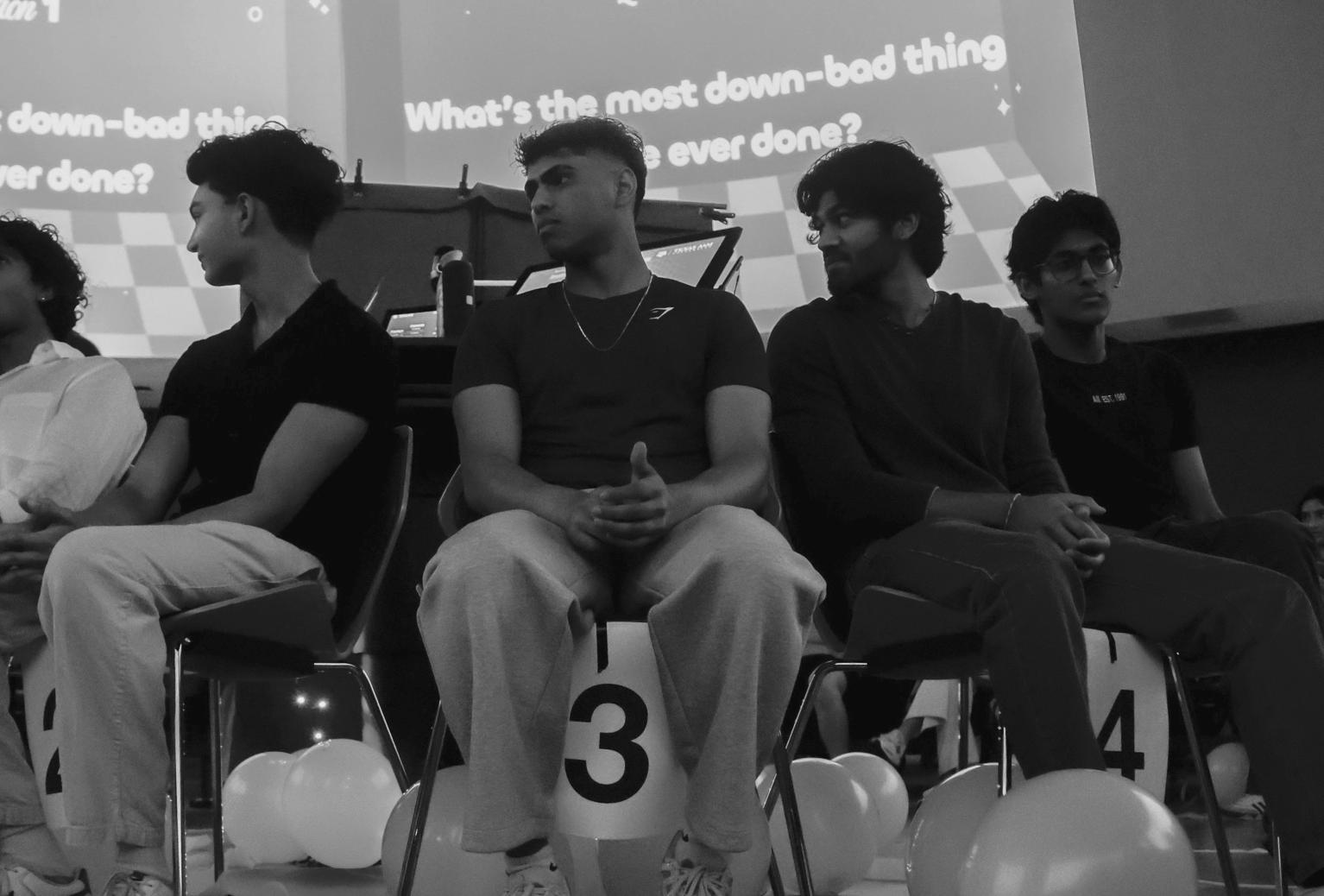
College Station with a bang. But at rst, Rama feared there wouldn’t be many attendees in his rst few UT shows.
“No one thought a show was actually going to happen, and we were scared,” Rama said. “No one was there at 6 p.m. Ten minutes later, it was fully packed.”
That momentum made its way to A&M. The entire 600seat auditorium was jammed with drama-hungry onlookers waiting to see Rama and his team spin their magic. Rama opened the show with a memorable introduction of the contestants — TikTok-style edits of each participant were displayed on the big screen. Once the laughs were out and the atmosphere was set, Rama dove right into the juicy questions, beginning the night of bold confessions and unexpected twists.
Rama’s series of questions left little room for predictability. They ranged from lighthearted prompts like “What’s your ideal night out?”
and “What’s your go-to dance move?” to questions so wildly unexpected that it’d leave people wondering if the show was staged. There’s no way Rama would really ask a contestant to call their ex live in front of over 600 people, right? Wrong.
The KUPID Dating Show stands out among other game shows not only because of its unique rules and unscripted nature but also through its ability to elicit genuine engagement from the audience. Throughout the show, crowd members were invited to weigh in on the contestants and even share their own answers to the show’s featured questions.
Rama also tossed over 50 plushies to random audience members as a thank-you for their enthusiasm, cementing his commitment to audience participation. Rama’s dedication to his ideas is not new — in fact, it’s the very thing that brought him and his show to where it is.
“[To advertise my rst show] I ended up dressing up in a Halloween costume and scaring people on our street throughout campus, and went to our food halls and would serve people food,” Rama said. “We marketed the rst show for six months straight.”
And if Rama’s passion for his craft doesn’t justify his success, his willingness to sacri ce for it certainly does. Most aspiring entrepreneurs will plan out their big dreams, network tirelessly and educate themselves endlessly, but contributing their own funds is where many falter or even give up. This is not the case for Rama.
“I’ve probably dropped around $4,000 out of my own pocket, and then I took out a $7,500 loan, so we’re still paying that back,” Rama said. The investments and sacri ces they made were worth it, though, as Friday night saw Rama and his team nish to a standing ovation of laughter and an encore following a thrilling spectacle of upsets, gossip
and drama.Times like these are his favorite part of running his game show, Rama said.
“Every location is a di erent experience, and it feels great to bring our little school club to all the universities in Texas,” Rama said.
After their tour at A&M, The KUPID Dating Show and Rama have optimistic wishes for the future, and Rama may be on track to be the next name of entertainment hosting. Provided continued show success, dropping out of college full time in order to run his entertainment company ‘Crash Media’ has been a plan, Rama said.
Despite Rama’s nancial sacri ces, invested time and incredible potential, he promises a stable, intrinsic purpose for his show — the reason he started it in the rst place, and the reason he’s keeping it going.
“It’s [all] comedy,” Rama said. “I set it up for the purpose of just entertaining people.”
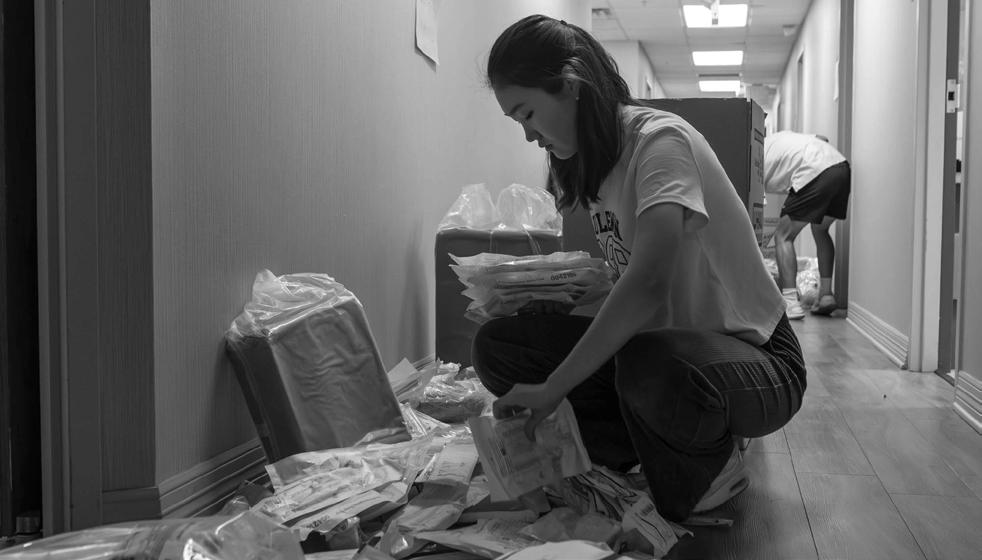
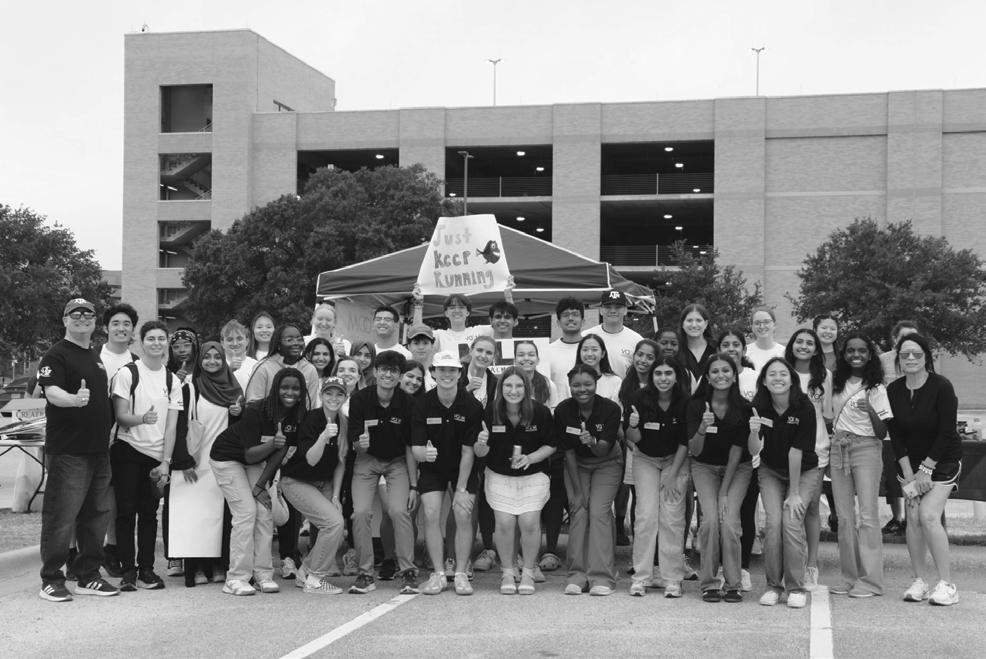

Aggies fight Nigerian health inequities through fundraising, medicine, educational campaigns and surpass $20,000 in two-year donation goal
By Lola Shmeis Life & Arts Writer
With over 95% of its population lacking access to medical services, Nigeria has a severe de ciency in medical care. In 2004, Dr. Vincent Ohaju founded the Vincent Obioma Ohaju Memorial, or VOOM, Foundation to combat this inequity in memory of his father, who died from a condition that could have been easily treated if he wasn’t in Nigeria.
Texas A&M VOOM Ambassadors is the student arm of that nonpro t. With the addition of a chapter at the University of North Texas, the VOOM Foundation now has two university chapters fundraising and assisting with advocacy e orts.
Neuroscience sophomore and VOOM Ambassadors treasurer Lucy Abu joined because she could relate to Ohaju’s loss. With most of her family residing in Nigeria, Abu is familiar with the losses inequitable healthcare access can cause.
“Every time I get on a call with them, I feel like I hear bad news because health education [there] is not the same as it is in the United States,” Abu said. “It’s just not accessible. I’ve lost family members due to things that could have been treated here, that could have been prevented here.”
While VOOM does provide general health services, they prioritize funding and performing open-heart surgeries. With 41 of these surgery missions under
their belt, VOOM says their work accounts for 17% all of open-heart surgeries in Nigeria.
One of these operations costs $2,500, and each semester, A&M VOOM Ambassadors aims to save four lives by raising $10,000.
For the past two years, the organization not only met that goal but surpassed it, raising a total of $25,000.
The group achieves their fundraising success through hosted events, such as a 5K and a pickleball tournament they’re organizing on April 12, and their Aggies Got Heart campaign, which just saw its third year of success.
By partnering with a di erent organization on campus each week, neuroscience senior and president Anna Sucec aims to increase awareness and contribute to the Aggie Core Value of Sel ess Service.
“With our large fundraisers, we are trying to get everybody involved,” Sucec said. “With Aggies Got Heart, we were mostly focused on the Texas A&M community.”
This year they partnered with the 12th Can, Latino Medical Student Association, A&M Red Cross Club and Future Aggie Physician Assistants. VOOM also received a grant from Mays Business School’s strategic philanthropy class. Their Aggieland partnerships aren’t just limited to fundraising, though. With the collective e ort of the Aggie volunteers, TAMU BUILD has constructed four clinics that the VOOM Foundation uses to provide eyecare, outpatient care and other general services. Through these clinics, 3,107 patients have been evaluated and 14,764 pounds of medicine have been dispersed.
“I’m a believer, as an Aggie, that Aggies are absolutely the best,” VOOM Executive Director Shawn Andaya-Pulliam ‘87 said.
“It’s not just me saying it, but it’s
proof that young people care very much about what is happening in this world. That is what makes me the most proud about the VOOM Ambassadors. … Kids are actually making choices and putting action behind wanting to help.”
With the Ambassadors’ help, VOOM takes around 5,000 pounds of medication on every trip to Nigeria. This is all ordered, inventoried and packaged by the students who make up the organization.
Another part of the VOOM Foundation’s work is the health fairs it hosts, where Nigerians can get their vitals checked and receive medication if they’re sick. Sucec likened the fairs to an annual physician visit in the U.S.
The Ambassadors have begun making educational pamphlets to be handed out at these fairs as well. The pamphlets include information on women’s health, postpartum depression, signs of pregnancy, how to treat common illnesses like the common cold and malaria and what to do if someone is choking.
During Andaya-Pulliam’s 2024 visit to Nigeria, she met a 3and 4-year-old brother and sister waiting to be seen at one of the clinics donated by the student group BUILD. Their mother said that was the rst time they had ever seen a doctor.
Andaya-Pulliam contrasted that experience with the fact that during their rst year, a child in the U.S. sees their pediatrician around 10 times. Without that clinic, Andaya-Pulliam believes the Nigerian siblings wouldn’t have seen a doctor until they started su ering from a health consequence.
Abu said she knows the work she has done as a VOOM Ambassador is truly meaningful.
“I know that the work that I am doing is helping someone not feel the pain that I feel,” Abu said.

AI tools offer an alluring alternative to students' cognitive processes
By Caleb Elizondo Web Editor
I don’t know if it’s just me, but every single professor I’ve had prepares at least one discussion post on generative arti cial intelligence and its usage in the classroom. While important, these conversations have quickly become repetitive, formulaic and unproductive.
One of the laziest talking points I keep hearing from commentators, classmates and even some instructors in these discussions goes something like this: “AI is a tool, just like a calculator. Would you insist students shouldn’t use calculators?
You’re going to have access to AI in the workplace, why shouldn’t you use it in the classroom, too?”
I’ve had to respond to these questions so many times it seemed appropriate to deliver my own exasperated polemic. So, here we go: AI usage in the classroom is rapidly degrading the quality of the college experience and education.
I’ve witnessed AI usage in both writing and programming through classrooms and student organizations.
While many will expound AI’s productivity bene ts and its ability to readily provide constructive criticism and collaboration, I can attest that the boots-on-theground reality in academia is much more grim.
For starters, the calculator analogy breaks down pretty quickly. If you use a calculator to solve most intermediate math problems, you’ve only displaced the repetitive process of manual mathematical calculations.
However, the user still had to analyze the problem, formulate a mathematical model or approach and then verify their answer. The user still fundamentally understands the problem and the way they solved it.
Large language models, or LLMs, like ChatGPT are unlike any tool that has come before in the sense that they displace thinking. The calculator isn’t making any creative or logical decisions on behalf of the user. You may think this is an arbitrary
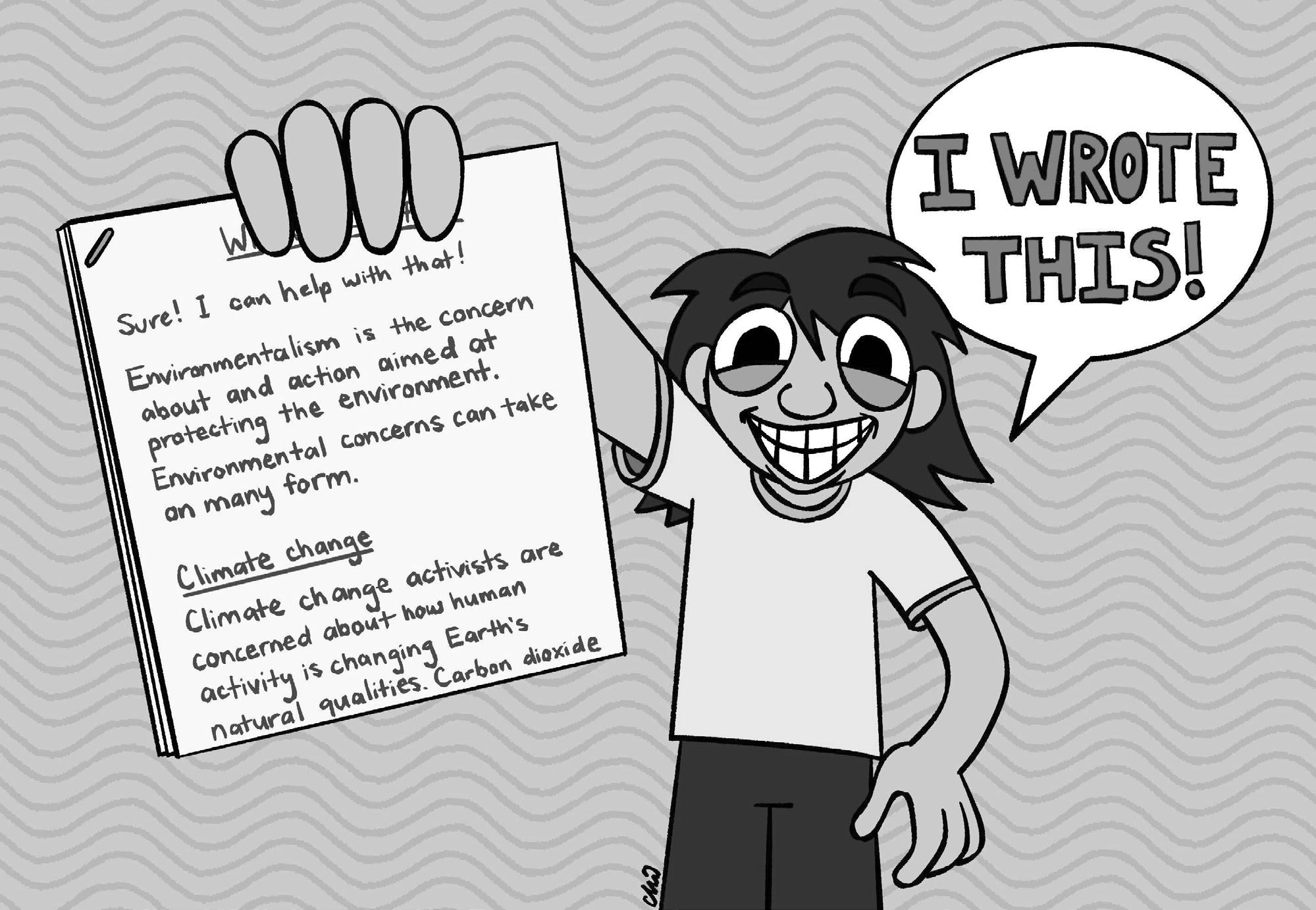
distinction, but it has profound consequences.
Sure, you can generate an essay with ChatGPT pretty easily, but is it any good? You could look at its word choice — is it appropriate for the subject?
What tone does the essay have, why and is this the right tonal decision for the assignment?
In the hands of a competent writer, they could use their judgement to leverage AI to provide alternative approaches and quickly edit drafts. But when AI presents such an alluring alternative to learning these skills and developing editorial judgement, inexperienced students quickly and uncritically accept the decisions the LLM makes without understanding them or the trade-o s made. They are cooking without any taste buds — without any ability to evaluate the AI’s responses.
In the context of programming, this often means computer science students simply input “how do I do X” and receive a generic response. It may be in an interpreted programming language (which are slower, but
more portable), when a compiled language (which is faster) would be more appropriate for their use case. The answer may be primarily optimized for time complexity, when space complexity is more important for the speci c problem. Did that sound like nonsense to you? Unfortunately, many computer science students don’t understand it either. The LLM makes the decision, and they accept it — in fact, they might not even realize these trade-o s were generated.
It works until it doesn’t, at which point the student lacks the knowledge and discipline to diagnose and solve the problem. I know because I’ve helped my classmates debug code they didn’t write — and certainly didn’t understand — and edit essays they didn’t write and barely read. This may be enough to scrape by in your classes. But eventually, when you need to tackle realworld problems, you will fail. You will struggle to understand what is important about the problem, its requirements, the tools and approaches available to you, weigh strategic trade-o s and identify
problems with your solution.
Another trend that I’ve noticed since the proliferation of ChatGPT and similar LLM tools is that students increasingly sound the same.
News ash: your writing is bland! It’s boring! Its structure is generic! It’s overly verbose! It all has the same professional, Wikipedia-style tone!
Now, being boring is hardly a sin, but when I know your writing is AI-generated — and trust me, I can tell — why would I bother reading it?
You certainly didn’t care enough to write it, why should I care enough to read it? Did you even bother reading it? Does this re ect any of your real thoughts or opinions? I’m inclined to think not.
Frankly, no one cares when it’s a classroom assignment, but eventually you will be asked to write something that matters. If I’m your boss, I want to know what you are capable of, not what ChatGPT can do. If I’m your colleague, I want to consult your experience and judgement, not a statistical model.
I’m not saying ChatGPT and other models aren’t useful or don’t have their place. In the hands of a critical, experienced user, they can automate repetitive tasks and make more time for more important work.
The problem is that if you rely on AI tools, you won’t develop the experience and critical mind necessary to use these tools e ectively.
So please, if you’re a student, moderate your AI usage — especially in domains you don’t know much about. I realized I was too reliant on AI programming tools during my junior year, so I removed Github Copilot from my code editor, and I’ve felt much more self-su cient since doing so. AI is too convenient, so put up some barriers and nd a system that forces moderation.
Your brain is a muscle. Use it. Or, at the very least, please nd a di erent mantra to repeat during those classroom discussion sessions.
Caleb Elizondo is a computer science senior and web editor for The Battalion.
Forget so bad it's good, this was just plain bad
By Charis Adkins Opinion Editor
Movie rating: 1/10 Theater experience: 10/10 Spoilers ahead for “A Minecraft Movie.”
It’s rare, as a 22-year-old college student, that I’m truly reminded of how little time we have on Earth. However, as I sat in the College Station Cinemark su ering through all 101 minutes of “A Minecraft Movie,” that was at the forefront of my mind.
Let me put it another way: This is not a movie to watch sober. Please, for my sake, indulge in your substance of choice before submitting yourself to an hour and a half of grotesque hyperrealism animation and unfunny jokes. Oh, how I wish I had pregamed. It would have made the completely unnecessary Jason Momoa and Jack Black 69 scene almost funny.
But, hey, everything’s got a silver lining, right? Let’s start with the things “A Minecraft Movie” did right.
I have no idea who the target audience is, but this movie had something for the two main archetypes of Minecraft players. For the nerdy boys who come home from school and hop on a world with their buddies, there’s Henry. For the Discord mods, there’s Steve.
Hear me out — overweight, weird fringing-on-neckbeard facial hair and canonically smells bad? Sound familiar?
The movie’s style of comedy — well, comedy is a strong word —
was to throw every plausible kind of joke at the audience and hope something sticks. While this was exhausting to watch, there was a little bit of humor for everyone; I cringed at some parts and laughed out loud at others, and I think most people had the same experience. And … that’s about it. The only other good part of this movie was Jack Black’s eyebrows.
Unfortunately, this is a movie made for Generation Alpha by Generation X, so most of the comedy consisted of saying the words “thingy” and “bro” an inordinate amount of times. Oh, and it also unironically used the word “unalive.” I nearly walked out of the theater.
The storyline was a cheap Jumanji knocko and the characters were woefully underdeveloped, even for my tempered expectations. It has the pacing of a TikTok short — too fast in all accounts, but halting awkwardly to have some sort of half-assed “grown-up” conversation between a pair of characters.
I’m con dent Natalie and Dawn’s little convo while killing the zombie was only there to satisfy the Bechdel test. Speaking of which, why were their characters even in the movie? They were sidelined for 80% of it and did absolutely nothing in the long run. I’m sure it was supposed to be some sort of “girl power” thing for the sisters that got dragged along to the theater, but, like everything else in this movie, it fell at.
The good female characters in this movie were Goosh — or whatever the evil lady's name was — and Jennifer Coolidge's role. Her romantic subplot with the villager comprised most of my favorite lines from the entire lm.
The storyline proves the writers have no respect for their audience. Spelling out every joke — who needs nuance? — and don’t get me started on the big suspense scene when Henry is trying to reach the cube on the top of the tower.
You’re telling me this kid has been building houses and defenses lickety-split for hours, but it somehow takes him four business days to build a three-block-tall staircase? You really couldn’t do any better than that? Make him run out of blocks, at least, or have the orb be guarded by obsidian he has to mine.
I already know what you’re going to say: “It’s a kids’ movie, stop taking it so seriously.”
When are we going to stop pretending like kids’ movies can’t be good lms? Remember “Lego Batman?” Remember “E.T.: The Extra-Terrestrial?”
What happened to treating kids like they have some base level of intelligence instead of feeding them slop like this?
Unfortunately, we’ll likely be seeing a sequel in the coming years, though for the life of me I don’t know what it could be about. The fact that Steve had elytra means he’s already been to the End, killed the Ender Dragon and gone to the End cities and ships that spawn through the gateway, so the sequel can’t be about that. In the end, it doesn’t matter. The plot is irrelevant anyway, and even if they did have a throughline, it would probably be as disappointing a story as this one.
The thing that made this movie bearable — and, dare I say, funny — was the audience. The theater erupted at every one of Jack Black’s iconic lines. “I am Steve?” Applause. “Flint and steel?” Cheers. “Chicken jockey?”


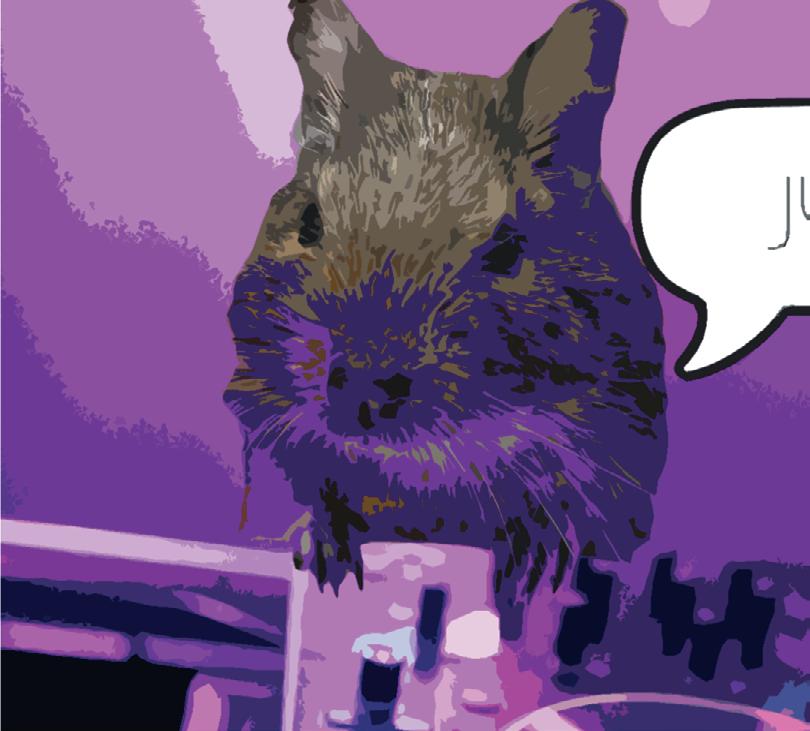











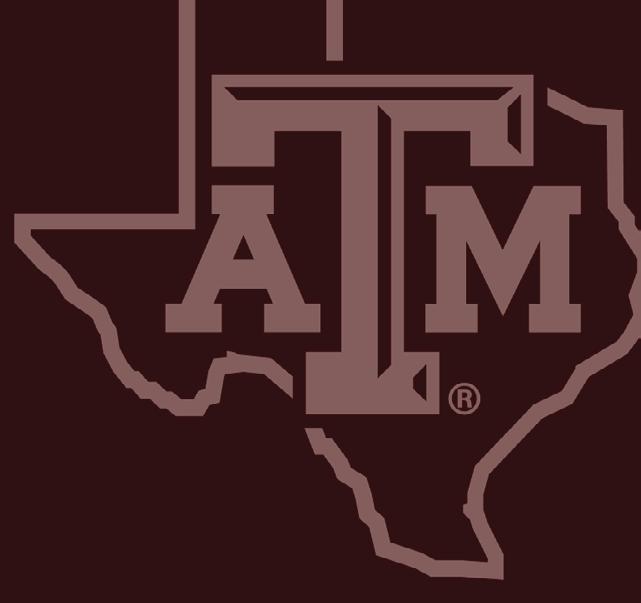
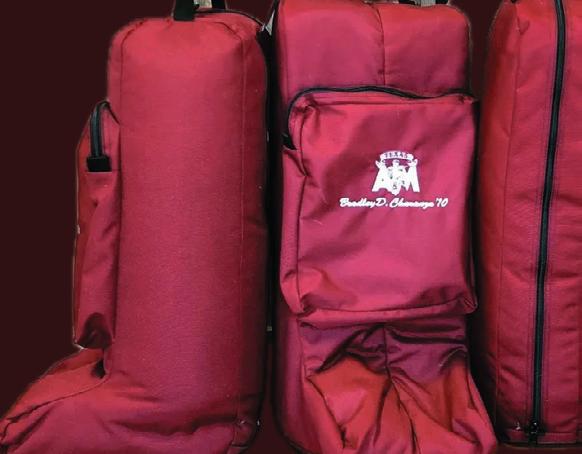










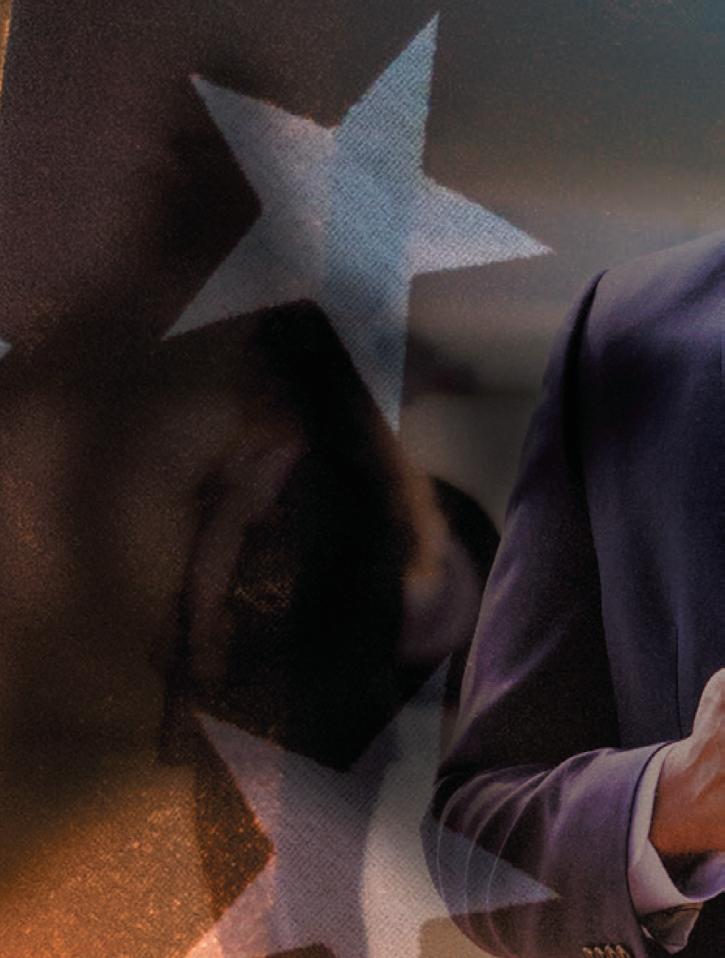
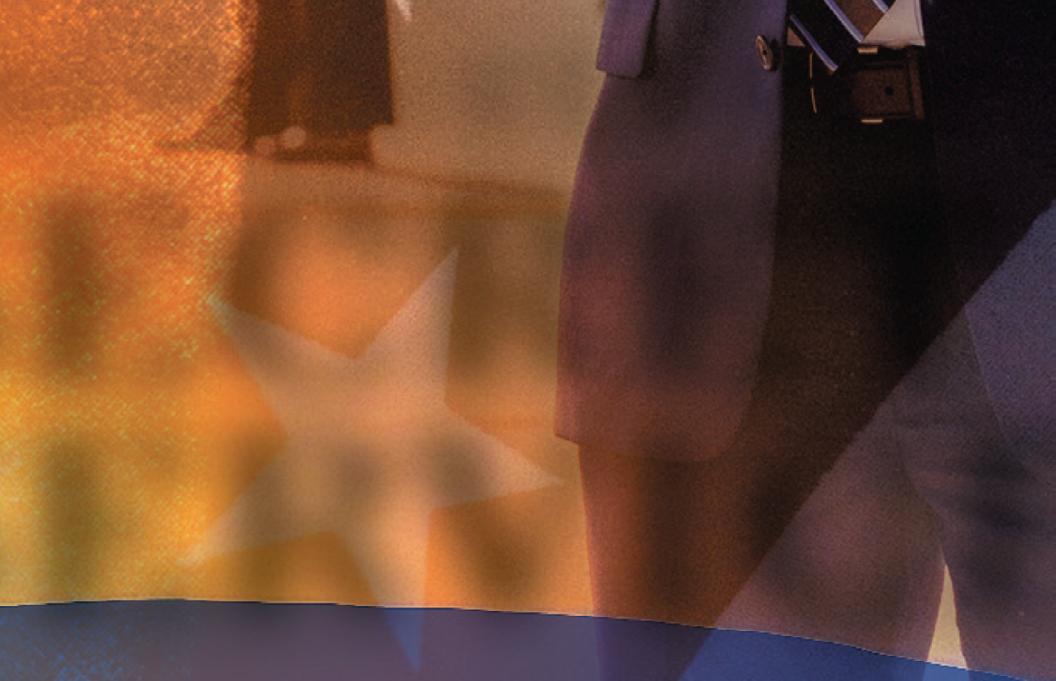
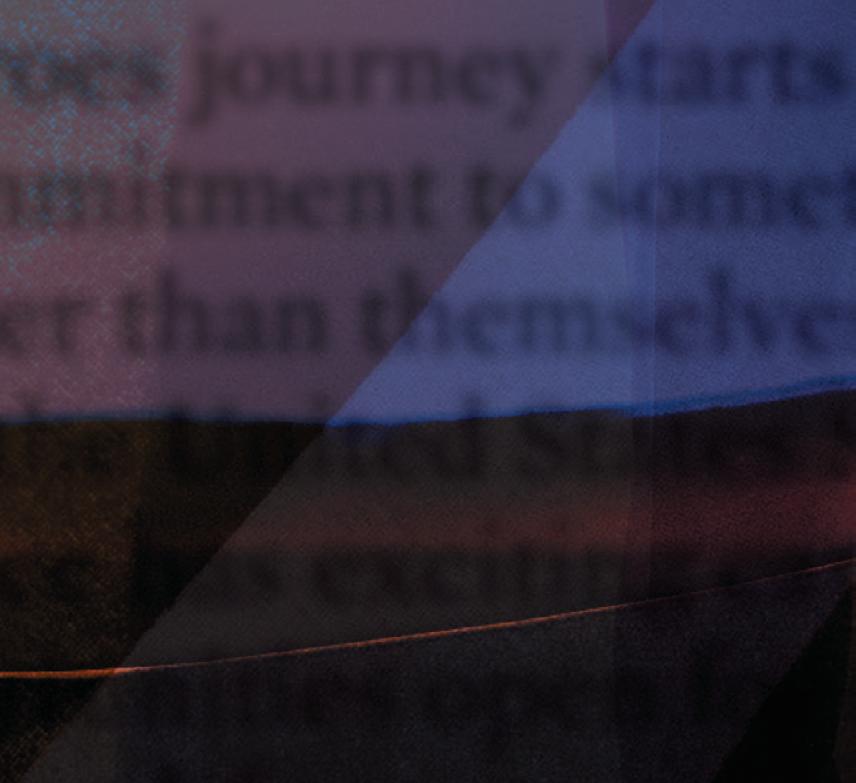








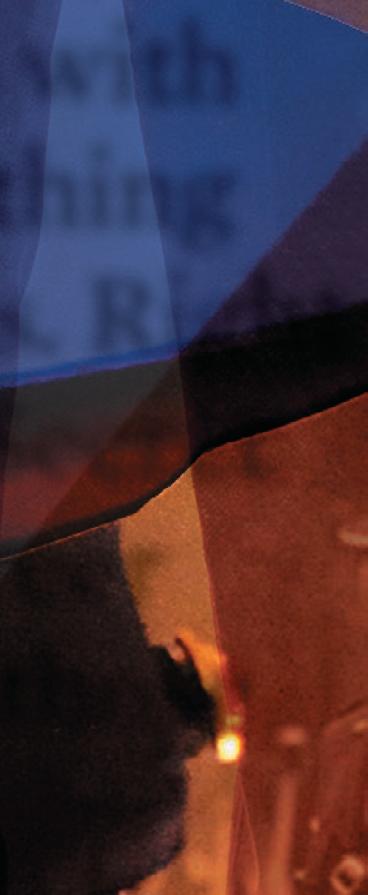








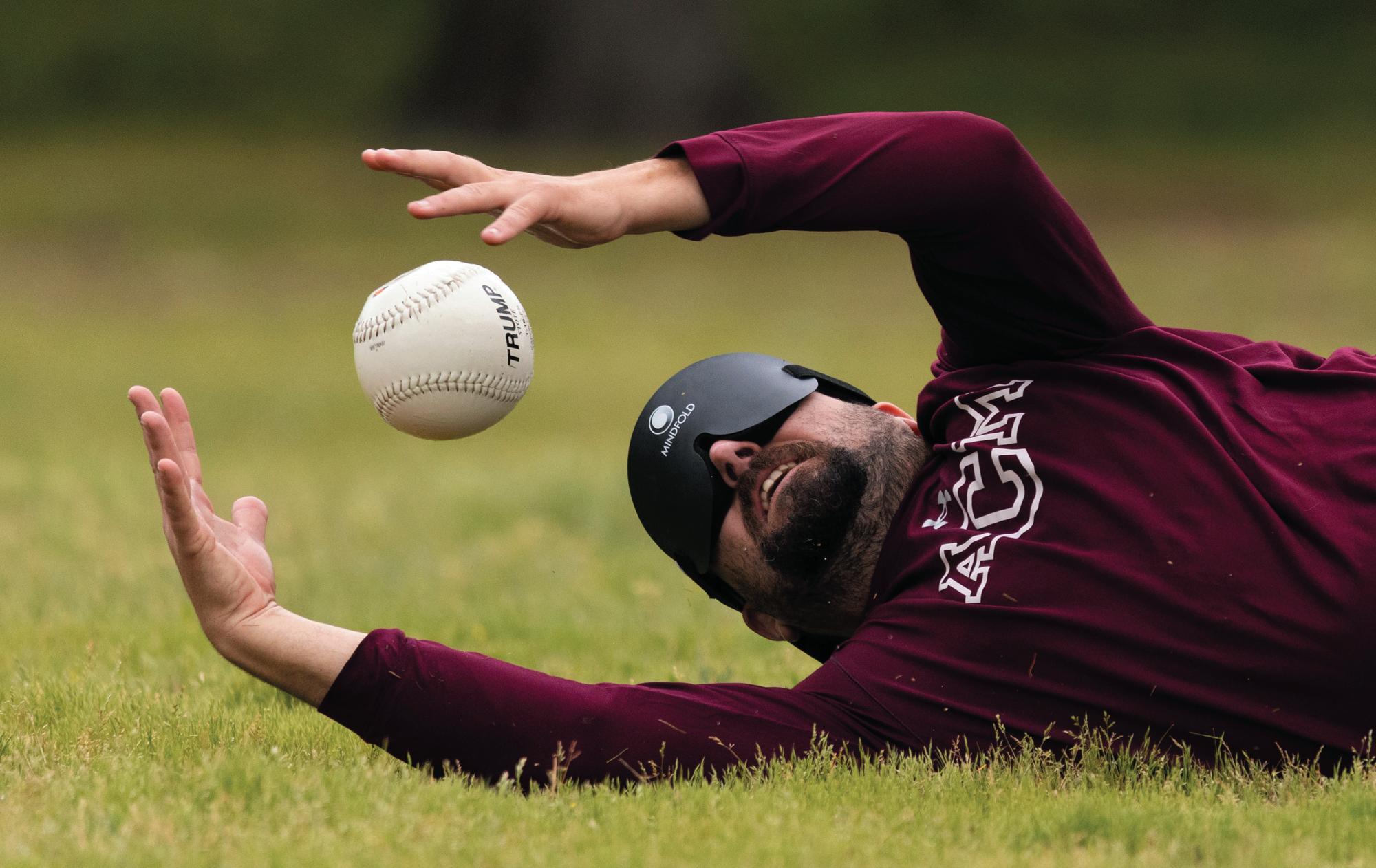

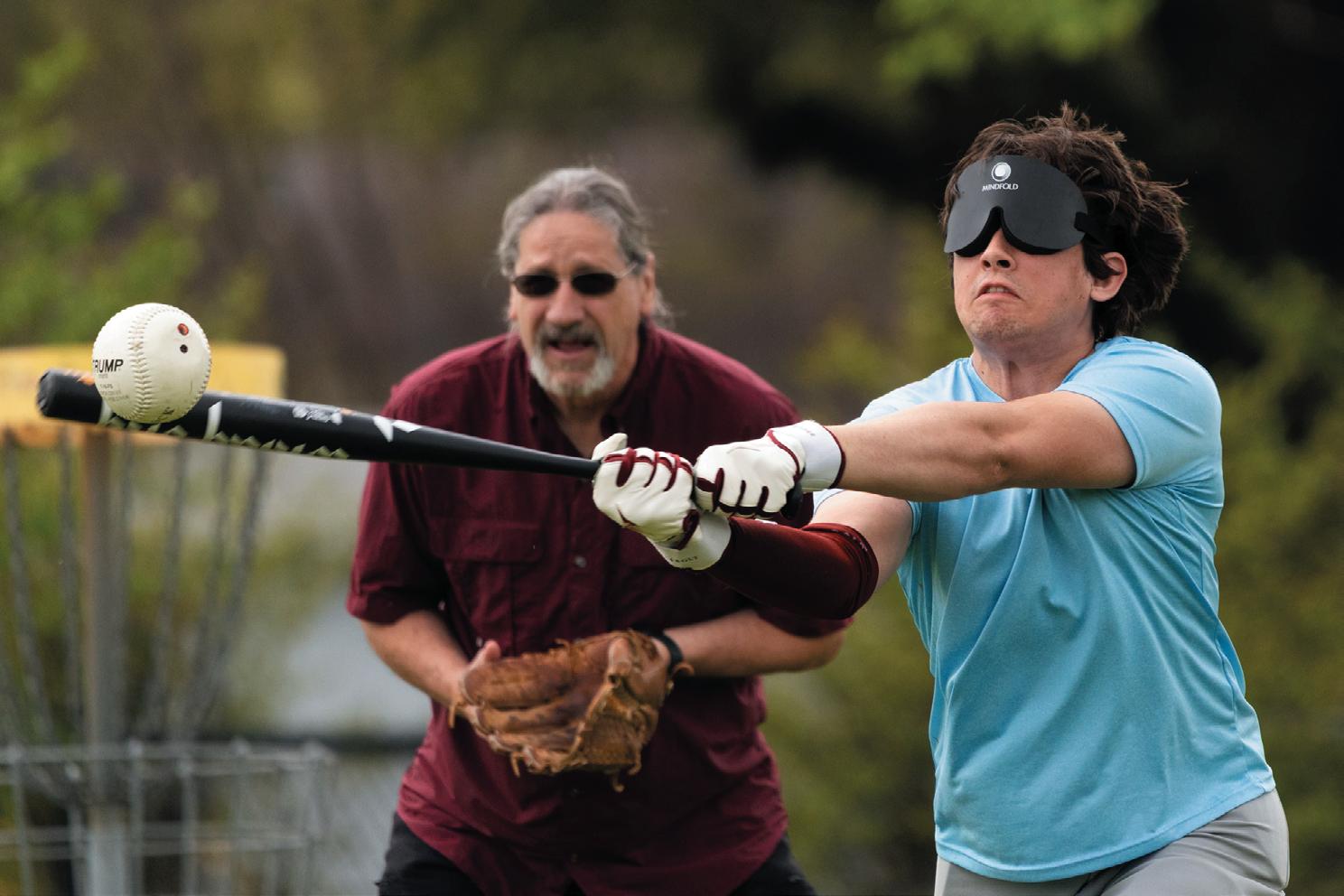
BCS Outlaws provides an outlet for visually impaired athletes
By Mathias Cubillan Associate Sports Editor
Exhausted after a day of travel, battered with baseball-born bruises and in a packed car at 1 a.m., Hillary Oswald ‘18 and her father, Jerry House, saw in the rearview mirror what everyone dreads most: the red and blue glare of police lights.
As the ashing lights neared and the o cer approached the driver’s side door, House pulled what Oswald described as “the blind card” to get out of the jam — the car was full of visually impaired athletes, all players on the locallybased BCS Outlaws Beep Baseball team.
House, the team’s sighted pitcher, was driving them home from a game.
In that moment, House’s use of the blind card to escape the ticket birthed a running joke on the Outlaws — an extension not born of shared hardship, but of found camaraderie, passion and yearning for community.
BCS Outlaws is one of four teams from Texas in the National Beep Baseball Association, or NBBA, an organization fostering a sport that both levels the playing eld and allows a community of visually-impaired people to compete at the top of their game. across the country
“Beep baseball is the adaptive form of America’s favorite pastime for the blind,” NBBA President Richie Flores ‘05 said. “It’s a way blind people can play baseball with their family, with their friends
because it also takes sighted folks to play along with us.”
A way to play
The game is designed around auditory cues, and the six players on each team wear blindfolds to even the playing eld due to the varying degrees of blindness.
Roughly the size of a softball, the ball makes a loud beeping sound to alert the players of its location once it’s hit.
Finally, players make a mad dash to one of the two bases on the eld, determined by whichever makes a buzzing noise, in an attempt to reach it before the ball is elded by the defense to score points.
“It’s intense,” Outlaws mid elder Alex Quick said. “You have a lot of people running around the eld who can’t see each other, communicating and talking. It makes for a really unique situation in a very unique sport. … You get to ful ll your athletic and your competitive potential, and also get skills like communication and be able to join a team in a family who will support you.”
With people of varying levels of visual impairment running fulltilt, communication and the help of spotters is key to maintaining player safety.
“Trust is a big learning curve,” Oswald said. “You really have to trust the people around you. You have to trust your teammates, and you have to trust the spotter. So there’s somebody in the eld who stands there and calls a number.
We had a new spotter once who hadn’t really been trained, and this was actually on March 1, when we had a game here, and he did not move, and I ran into him and broke my thumb.”
Building bonds
Quick lost his vision from optic nerve atrophy in one of his eyes from mastoiditis he su ered when he was four. Quick fell in love with sports at a young age.
“I played tee-ball, but once the ball came too fast for me to see, I kind of just stopped playing because I didn’t want my head to get taken o ,” Quick said. “I’ve always loved athletics and competition. … So [beep baseball] was kind of just a natural thing to progress into once I learned about it.”
With the desire to compete spurring him on, Quick joined the Outlaws three years ago after brief stints with Houston’s Bayou City Heat and a now-disbanded team from Dallas.
“I knew zero blind people before I got involved with blind sports,” Quick said. “So being able to talk to people that have shared experiences and lived experiences that are similar to myself, it’s very nice.And the Outlaws in particular, they’re really good family.”
Despite his relative inexperience when he joined the team, Oswald has seen Quick develop into one of the most important pillars of the team. Quick has taken on a leadership role as well, where he works with media, coordinates fundraising and sets up events.
“He was this scrawny little high school boy, and we’re like, ‘He was fast, though,’” Oswald said. “Like, that was the thing. His last name is Quick, which is good that he’s fast. But I remember watching him the rst couple times, you just wanted him to make contact with the ball. Show you can make contact with the ball. He’s so fast, he’ll score, but now he has so much power, and he’s super con dent.”
Beep baseball hasn’t just forged
new relationships, though. It’s helped forge familial bonds that continue to grow — namely Oswald and House’s fatherdaughter relationship.
“He played football in high school, and he was an athlete growing up, so he kind of watched as the World Series went on the rst year,” Oswald said. “The guy who had been our pitcher, he hurt his hand or his arm or something. And so my dad actually ended up stepping in and pitching one of the games and loved it. And so since then, he became the pitcher, and he’s been pitching ever since.
It’s just really fun to get to do something like that with my dad for the last 10 years.”
Growing the game
The Outlaws’ memories, struggles and laughs aren’t isolated. Across the United States, teams will travel to compete in the annual NBBA Beep Baseball World Series on July 20.
“We’ve been hosting a World Series for beep baseball since 1976 and that usually is about 20 teams coming together and having a double elimination tournament throughout the week,” Flores said.
“It’s about ve days of competition, but that’s our main purpose, is to make sure that every year there’s a World Series champion crowned in beep baseball.”
Although at the moment the NBBA doesn’t have a U.S.based team that travels abroad, the sport’s tendrils have begun to stretch across the globe, slowly latching on in Mexico, Canada, the Dominican Republic and in a country that’s been absent for a while — but is now returning to the fold.
“This year, the Taiwan a liation of beep baseball [is] coming back,”
Flores said. “We hadn’t seen them since pre-pandemic. 2018 was the last time we saw the Taiwan team, and they’re set to come back this year and make us an international tournament again.”
Despite the goals of international expansion from the NBBA, logistics on the local level continue to present challenges for the BCS Outlaws. The day-today struggles for Oswald as the team’s de-facto leader include coordinating transportation to games for teammates who can’t drive, fundraising and nding volunteers to help her team.
“Another thing that you always take for granted is we had a mom who would always like, tell us where our waters were,” Oswald said. “Because people come, run o the eld, grab your water, you set it down, then you move it half the time. And I’m always like, ‘Where’s my water? Where are my gloves?’ So like, somebody to literally just be your mom, hand you your water and your gloves.”
For the BCS Outlaws and those at the NBBA, beep baseball has formed a community. The sport’s ease of accessibility has combined with the players’ passion for athletics to form a space for the blind. Whether it’s navigating societal expectations, getting the word out about their sport or talking their way out of a ticket, the Outlaws persevere nonetheless.
“There’s so many ways that folks either try to exclude us or limit us or try to prevent us from trying things because they’re afraid we might get hurt or we can’t do it,” Flores said. “There’s just a stereotype already that we cannot. And so blind people so many times, if you want to do something, if you have to do something, if you need to do something, we nd a way to do it.”

Aggies look to extend winning streak to double digits in top-10 conference matchup
By Diego Saenz Sports Writer
No. 3 Texas A&M softball is riding into the weekend on a nine-game winning streak with a chance to make a statement as the Southeastern Conference’s hottest team. The Aggies welcome No. 6 LSU to Davis Diamond for a heavyweight battle between two programs with nearly identical resumes and statsheets.
A&M opened its season with a dominant 20-2 non-conference run, highlighted by wins over No. 8 Florida State and No. 13 Texas Tech. They dropped their SEC opener to then-No. 3 Florida but have caught re since, winning all but one game after that series.
The Aggies’ last loss came on March 21 against the then-No. 24 Alabama Crimson Tide. Since then, the Maroon and White have rattled o nine straight victories, outscoring opponents 82-19 while recording four shutouts and six run-rule victories along the way.
Coming o a dominant series win that saw the Fightin’ Farmers outscore the No. 16 Georgia Bulldogs 20-5 over two games, the Aggies will be hungry to carry their momentum over against a title contender in LSU.
Meanwhile, LSU has been impressive in their own right. While they may not be as redhot as the Aggies, the Tigers are coming o a hard-fought 2-1 series win over Alabama and still have the repower to overwhelm any team in the country.
LSU opened the season ranked No. 10 nationally and quickly climbed the polls after a remarkable 29-1 start, rising as high as No. 3 by late March. Since reaching that ranking, however, the Tigers have cooled o .They’ve gone 7-4 over their last 11 games, including a series loss to No. 11 South Carolina that bumped them down to No. 6 in the national rankings.
The stage is set for what should be a wonderful matchup between two rivals that are scarily similar.
LSU and A&M enter the weekend ranked No. 2 and No. 3 in o ense and No. 3 and No. 4 in pitching, respectively, among SEC teams.The Aggies have the edge in power, leading the Tigers with 38 home runs, 350 hits and a .547 slugging percentage. But LSU is more consistent at the plate, boasting a .361 batting average compared to A&M’s .352, along
with six more total RBIs.
If there’s a weakness on the visitor’s o ense, it’s their lack of home runs. LSU ranks second worst in the SEC in home runs with only 34 in the year, a stat that should take some pressure o A&M’s pitchers.
Both teams are exceptional collectively, but it’s the individuals who will ultimately decide the outcome. With All-Americans on both sides, a few players are poised to make the biggest impact.
Sophomore rst baseman Mya Perez has been one of A&M’s most dangerous hitters, boasting a .450 average with 45 hits, 12 home runs and 55 RBIs, placing her among the top three in the SEC.
For LSU, its premier o ensive weapon this season has been redshirt freshman 1B Tori Edwards, who missed the previous year due to injury. She leads the conference with 14 home runs and ranks third with 56 RBIs as well as ranking top 10 in both batting average and slugging percentage.
Both teams are equally dominant in the pitching department, with the Tigers holding a slight edge in ERA at 2.03 compared to the Aggies’ 2.23. Both teams have been dynamic in the circle, with LSU holding opponents to a .199 batting average and A&M allowing a .215 average. The Aggies have posted 10 shutouts this season, just two fewer than LSU’s 12.
While both sides feature excellent work from the circle, the Tigers’ pitchers have been prone to giving up free passes, with 24 wild pitches and 26 hit batters — the third most in the SEC — as well as 104 walks.
A&M, on the other hand, has been more disciplined, surrendering just 89 walks and 17 hit batters.
However, LSU has only allowed 13 home runs compared to A&M’s 22 and has given up fewer doubles, 18-to-36.
Junior right-handed pitcher Sydney Berzon has been LSU’s ace in the circle, posting a 14-3 record with a 1.94 ERA, good for fth in the SEC. She has struck out 84 batters while limiting opponents to a .226 batting average, solidifying her role as a top pitcher in the conference.
Senior left-handed pitcher Emiley Kennedy has been dominant for the Aggies with a 12-3 record and a 2.52 ERA across 19 appearances.
The D1 Softball Preseason rstteam All-American has racked up 82 strikeouts and held opponents to a .188 batting average.
The much highly-anticipated showdown between these two rivals is set to kick o this Friday at 6 p.m. at Davis Diamond, with Game 2 slated for Saturday at 2 p.m. and Game 3 on Sunday at 1 p.m.
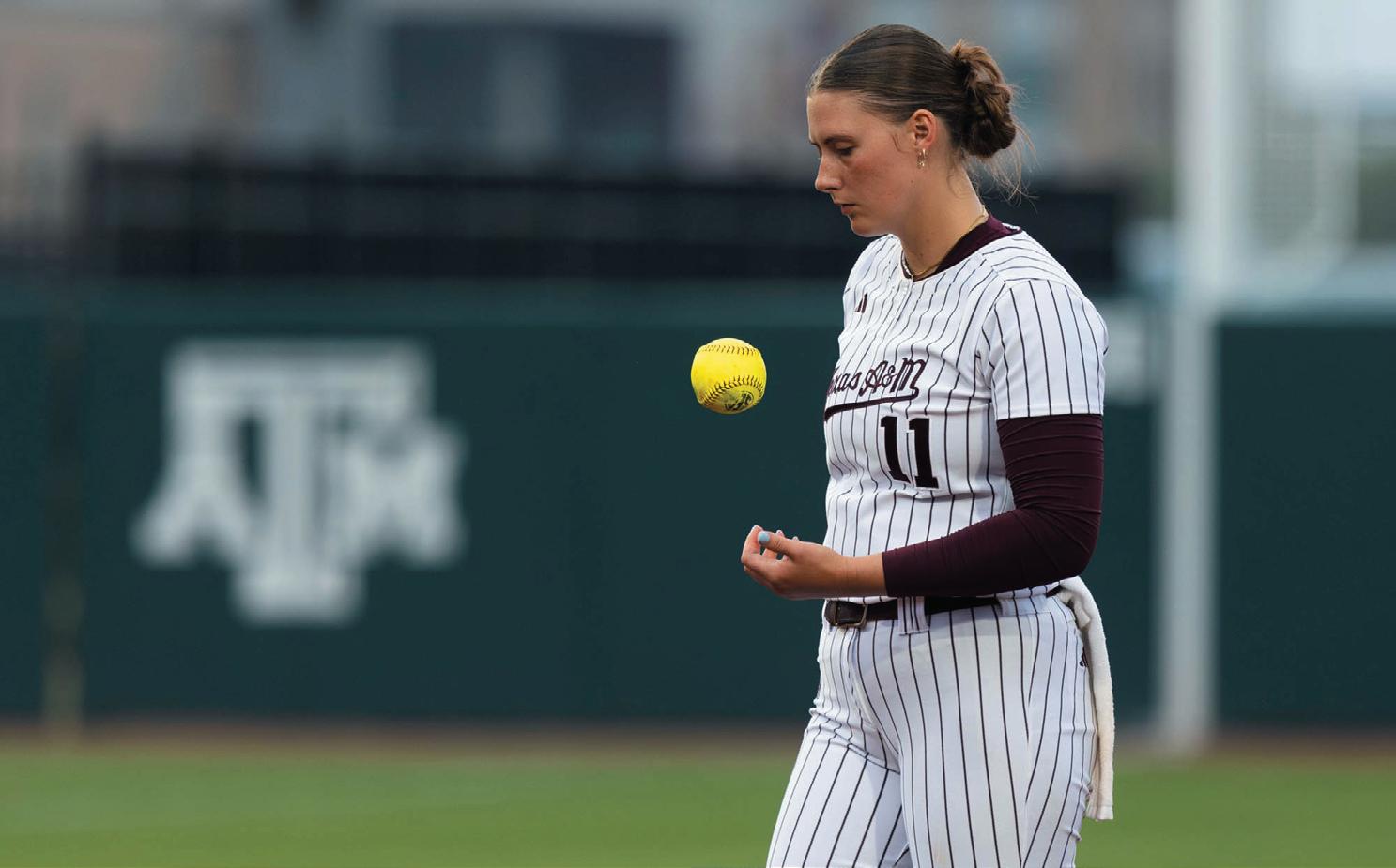


A&M looks to improve after SEC series win
By Kaylee Tracy Sports Writer
Texas A&M baseball has pivoted in the batter’s box and in its recent series, slamming the ball into back-to-back run-rule wins. Following a 14-1 landslide over Sam Houston and a pair of consecutive victories over thenNo. 1 Tennessee that totalled 26 runs driven in for the Maroon and
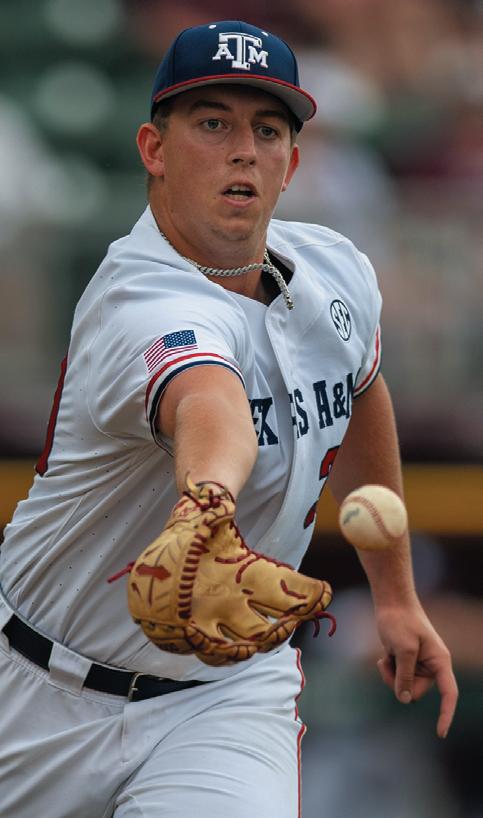
White, the Aggies will now turn their attention to the oundering South Carolina Gamecocks as they ock into town.
Starving for their rst Southeastern Conference win in the midst of a season from hell, the Fightin’ Farmers embraced a classic eight-run comeback in their rst game against Kentucky on March 28, trailing re around the bags and setting Olsen Field smoking with a 9-7 coup.
The conquest was resettled by the Wildcats, however, shoving A&M to the trenches with
successive beatings of 14-11 in the second game and 10-5 in the third. Nevertheless, the series was not without its successes.
Junior center elder Jace LaViolette roped the 57th dinger of his career, breaking A&M’s career home run record. Soaring at 89 mph o the bat and 393 feet into the bleachers, the hit got the 12th Man on its feet and brought an earned smile to the junior’s face as he rounded the bags in triumph.
The rst game at Lindsey Nelson Stadium didn’t go well

for A&M, who was run-ruled by Tennessee 10-0. But the loss would be a wake-up call for the Maroon and White as it would go on to collect eleven home runs and steal the doubleheader Saturday with a score of 9-3, followed by a grand nale wrapping at 17-6 with Tennessee stumbling behind an 11-run de cit.
The bases continued to be charged with Aggie magic as they took to the road again, letting all of Huntsville know they were in town — pulling another win out of the hat. The game totaled 14 A&M runs driven in to shadow the Bearkats’ single homer secured by senior right elder Brady Christensen in the belly of the rst inning.
The Fightin’ Farmers shouldered only four strikeouts measured against an Orange and White dozen, being handed ve runs in the top of the fourth by junior right-handed pitcher Garrett Baumann in the circle. RBI doubles by sophomore designated hitter Caden Sorrell drilled Aggie cleats into the dirt and points onto the board. Sorrell shocked the stands with his return from a lingering hamstring injury, his presence at the plate a key component in A&M’s o ensive table-turn.
Such sweet success has the Aggies staring down the beak of “Sir Big Spur” at a potential series sweep against the South Carolina Gamecocks.
But what are black and garnet feathers bringing to the plate?
South Carolina sits 2-2 on the week, having defeated the Presbyterian Blue Hose 11-1 in a run-rule victory at Founders Park and carrying the good vibes into its most recent win in the starting matchup against Mississippi State.
The Gamecocks headed back to the hotel Friday night with a 7-3 score guiding them into the remaining games, which were claimed by the Bulldogs. Mississippi State slugged ve home runs in the second game and sealed the series with a mercy-rule win the following day, burying the Gamecocks, 6-0.
Last year’s bout between South Carolina and A&M was played away at Founders Park, A&M claiming victory in two of the three battles.
The closing game in the 2024 series ended in a narrow loss, with South Carolina pulling ahead by one in a nal score of 6-5.
The Aggies are tied with a 12-12 win-loss ratio against the Gamecocks, with better success secured when visiting Columbia, South Carolina, than at Olsen Field.
So will the Maroon and White be able to dish out defeat at
in College Station?
They certainly hope to, as they prepare to face the
with

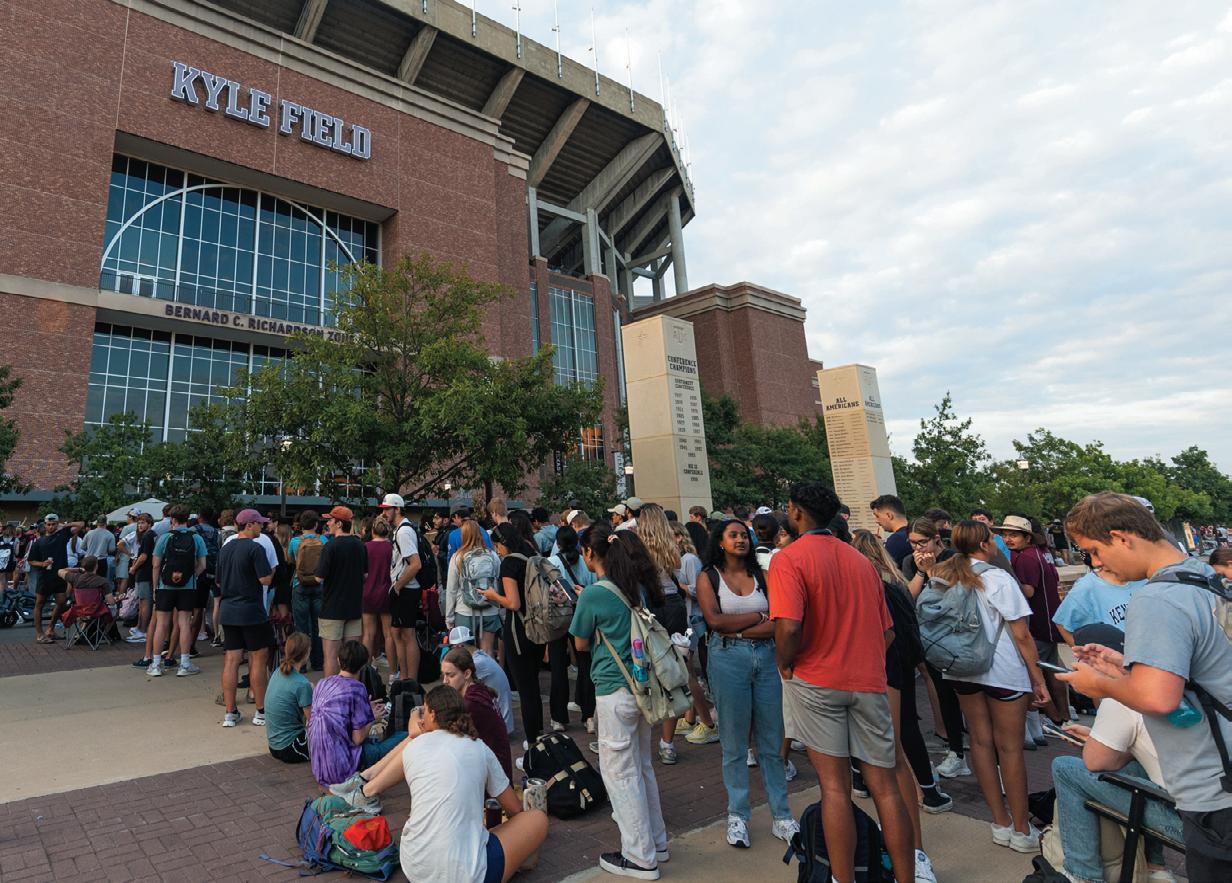
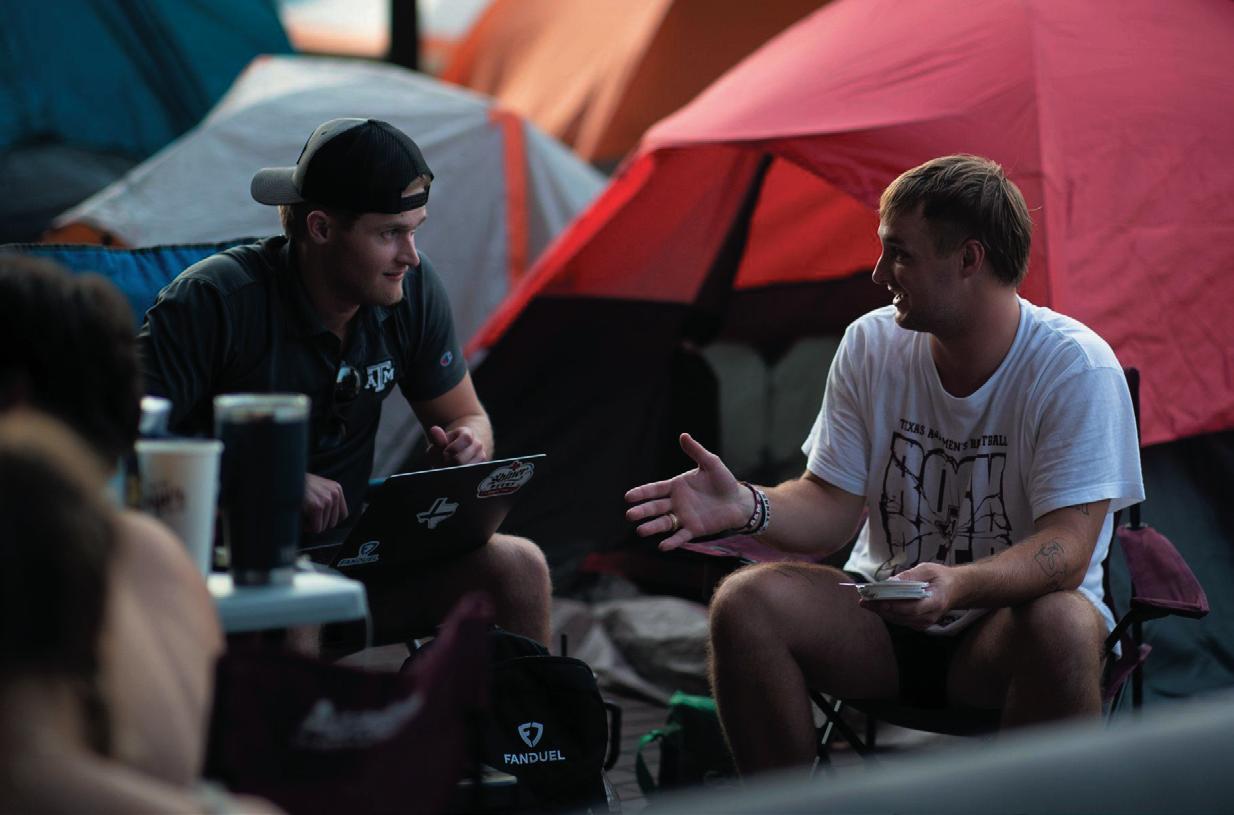

On March 26, Texas A&M President Mark A. Welsh III unveiled the new ticket pull guidelines via an email to the student body. The new system will not allow groups larger than 10 or guest ticket transfers, among other changes.
“As we shift to a modern ticket distribution approach that prioritizes safety and aligns with our peers, we are con dent these changes will return a focus on student tickets being used by their intended recipients, our students, so that they can enjoy incredible Aggie sporting events with fellow Ags,” Welsh said in the email.
Here’s what our sports desk has to say about this online ticket pull system.
DJ Burton Senior Sports Writer
I think it’s stupid. Those 72 hours spent in line for the t.u. Ticket Pull Disaster of ‘24 built character. Classic ticket pull ensured that people who really wanted tickets got them. The 3 a.m. wake-ups and campouts made you work for your seat.
With that being said, there was absolutely nothing wrong with the way ticket pull was done in 2023. The new anticamping rules implemented at the beginning of 2024 created the messes that ultimately got












ticket pull banned. I can’t wait to watch the servers crash before the UTSA game. Glad I’ll be a former student.
Noah
Ruiz Sports Writer
I love it — if the website doesn’t crash on the rst day.
Over three years, I have camped out for all big-time games in front of Kyle Field and I absolutely love this change. I’ve pulled tickets for all but one game in my time here with my best friend, and it’ll be nice to wake up in bed and reserve my ticket as a senior online. The time will come for freshmen to get the best spots in the house as seniors, but until that point, the old folks shouldn’t get shafted out of the rst deck because some organization got their ratios correct in the paper bag they sneak up to the front of the line.
Sorry, Class of 2029, I was a t.u Ticket Pull Survivor, and I say this is the right way.
Roman Arteaga
Senior Sports Writer
Since I became a fan of A&M sports and traditions, I have always thought of ticket pull as something you had to experience. Collecting your friends’ sports passes, waking up at the crack of dawn, walking over to a long line of your fellow students and waiting for your football tickets is one of the most
memorable traditions at A&M. Replacing that with a digital ticket pull is a signi cant downgrade and hurts the overall experience for home football games. While there have been a few problems in the past, completely scrapping ticket pull takes away an Aggie tradition that has been here for decades. This was a horrible decision.
Victoria Taylor Sports Writer
I believe the new ticket pull is going to run much smoother for the whole student body as it is now online. I’ve been pulling my tickets online the entire time I have been at A&M since I’m involved in athletics, so I know how simple it is to easily click some buttons and your ticket is ready to go for the game.
After hearing some horror stories of people in line for ticket pull before the game against Texas, I would be very relieved to not have to camp out or feel smushed in a large crowd of the majority of the student body all trying to get tickets for the games.
Olivia Sims Sports Writer
I really don’t have much to say about ticket pull going online, besides the fact that I am going to have to learn how to pull tickets for myself, nally. I’d always pull in big groups, whether it be with my sorority, the Corps or
even smaller groups of friends, so I’d always give my sports pass to someone else to do the heavy lifting.
Being a senior, I have only known ticket pull being in person, so the move to online may be frustrating to learn for my last football season as a student.
Kaylee Tracey Sports Writer
You’re a mom trying to support your son in the 400-meter dash. You’re a senior citizen hoping to catch your granddaughter smoke a homer over the wall.
But you’re being turned away at the gates because a QR code won’t load. Frustrating, to say the least. You’re then ready to hurl yourself through the ticket windows at students who have no control over the issue. It’s as trying on them as it is on you.
Everyone wishes for the same thing: to return to the way it was.
Ava Loth Sports Writer
With the recently-released ticket pull guidelines for us Aggies, it’s no surprise people are not too fond of the new procedure. Digital ticket pull should’ve been a thing years ago despite the tradition — however, the new system leaves a lot to be questioned.
The biggest issue is the classi cation system. If you want
to sit with your friends, the lowest class classi cation in the group determines the day you pull. Whether it’s nine people or just one, it puts pressure on certain people and could cause “friends” showing their true colors over which day they get to pull. I fully see this system needing some tweaking after what comes of it this next season.
Robert Blackburn Sports Writer
The new ticket pull system is worse because it no longer results in the people who want the tickets the most getting the best seats. Like Professor Gronberg said in ECON 202 last semester, the market works best when the people who want things the most are allowed to get them. By implementing the new system, this will no longer take place.
Youngchan Kang
Sports Writer
I like how Welsh decided to take action for the safety of ticket pull after the Texas ticket pull asco. Witnessing ticket pull from Notre Dame to the Texas game last season, safety was the biggest concern for me because of how crowded it was and the lack of security. Sure, it sucks losing a tradition that many Aggies have adored for years, but safety comes rst, especially when it’s just a ticket to a football game.













































































































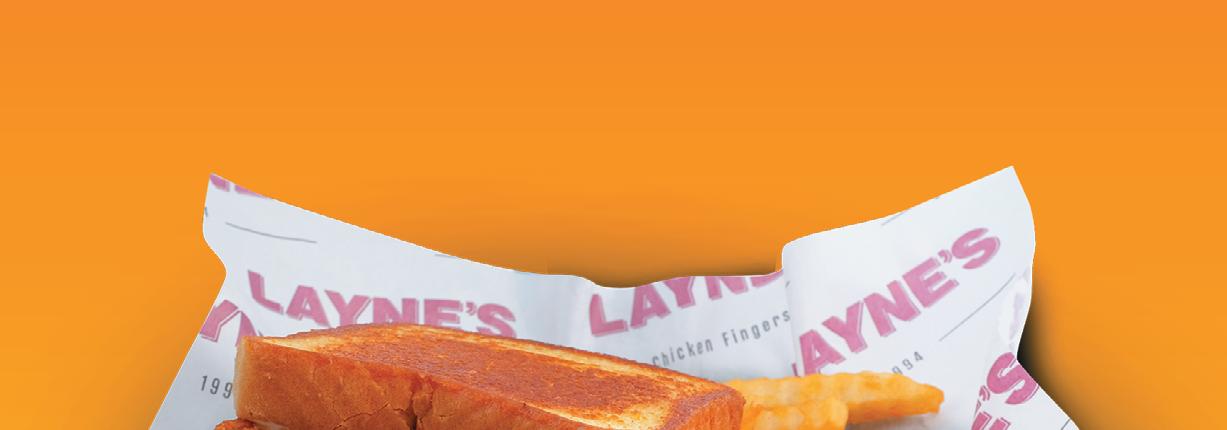

























































































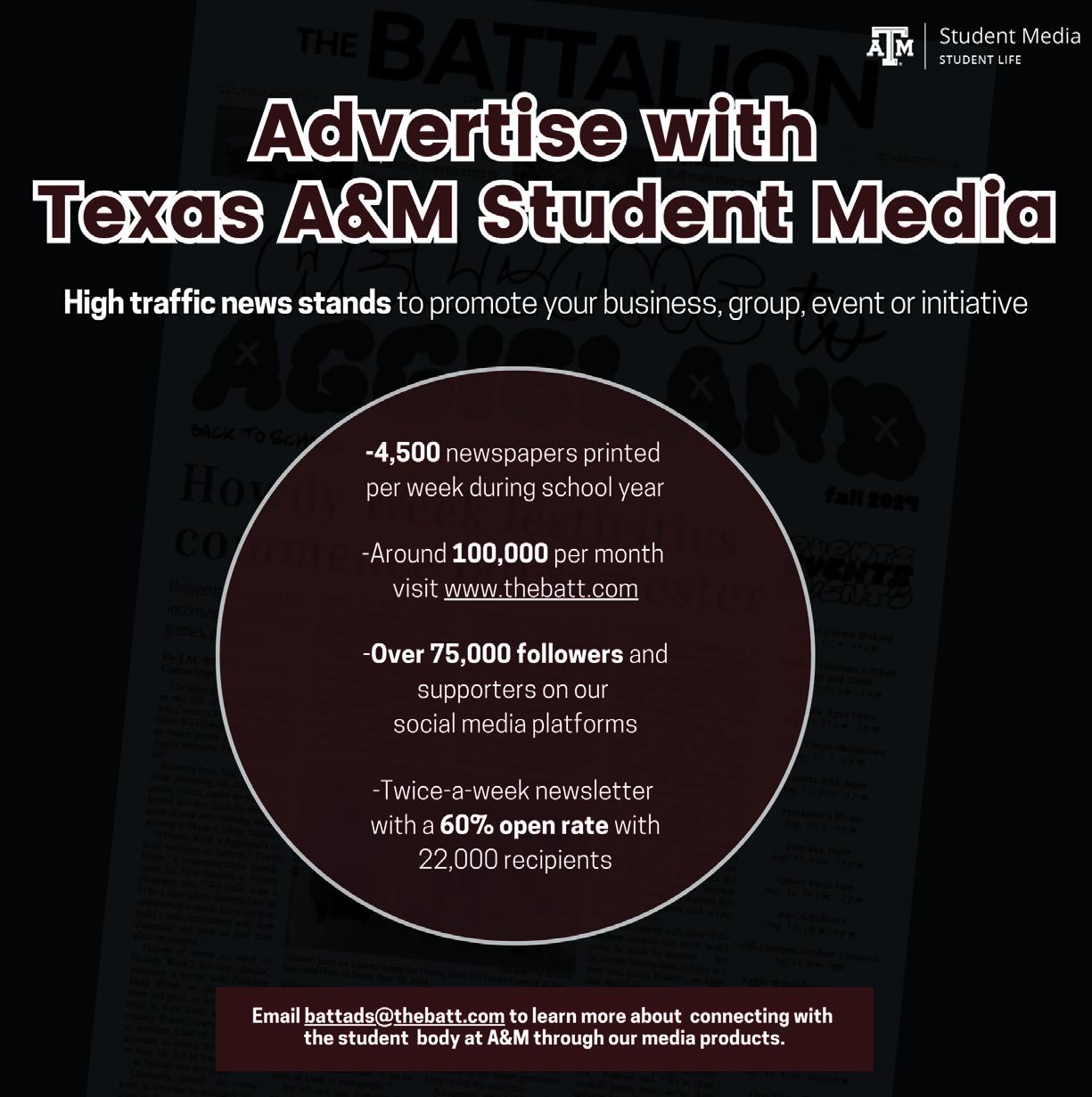

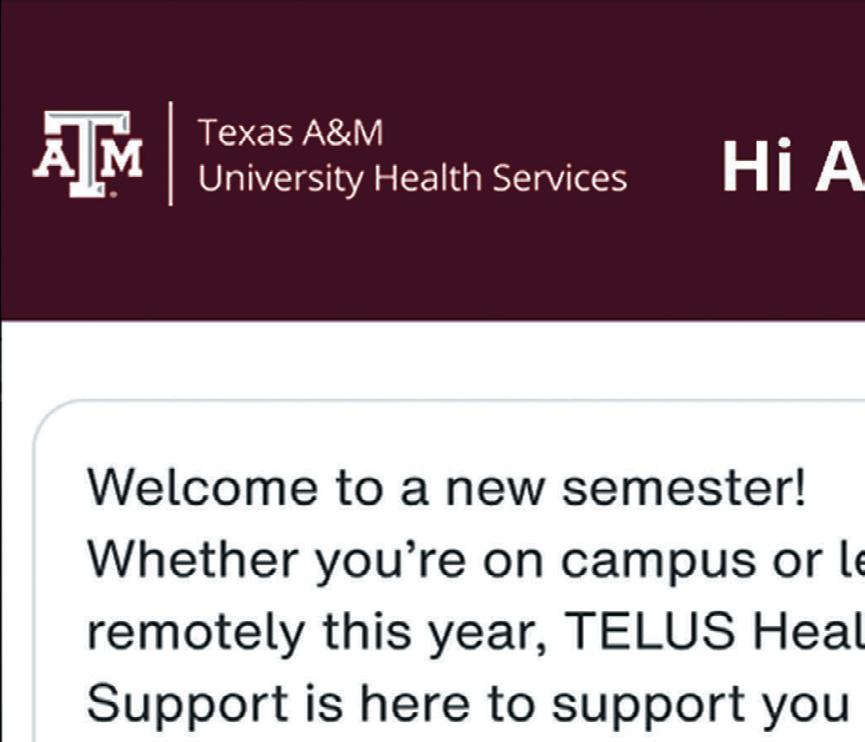















c h 2 7 , 2 0 2 5 0 1 P . M . P l a z a





